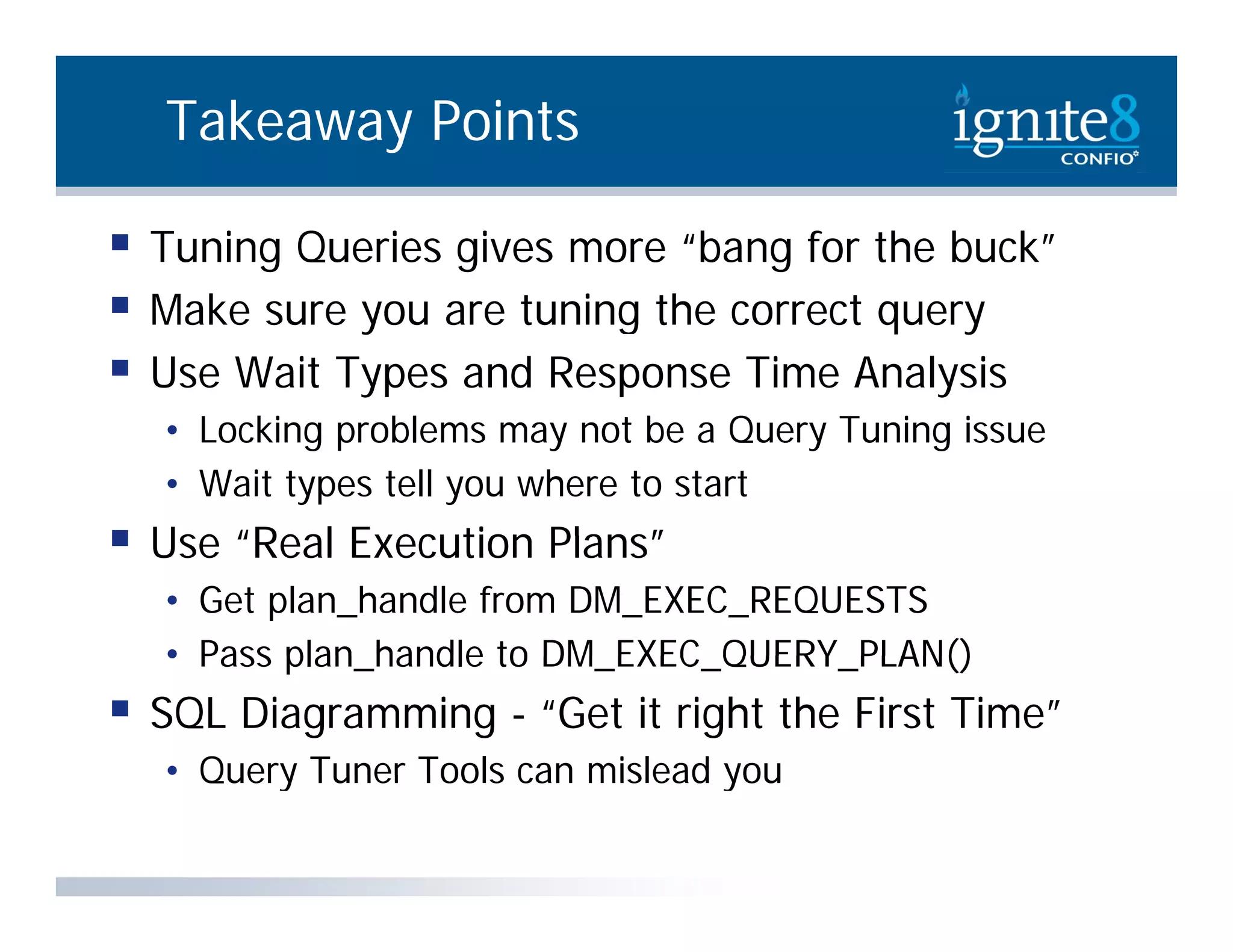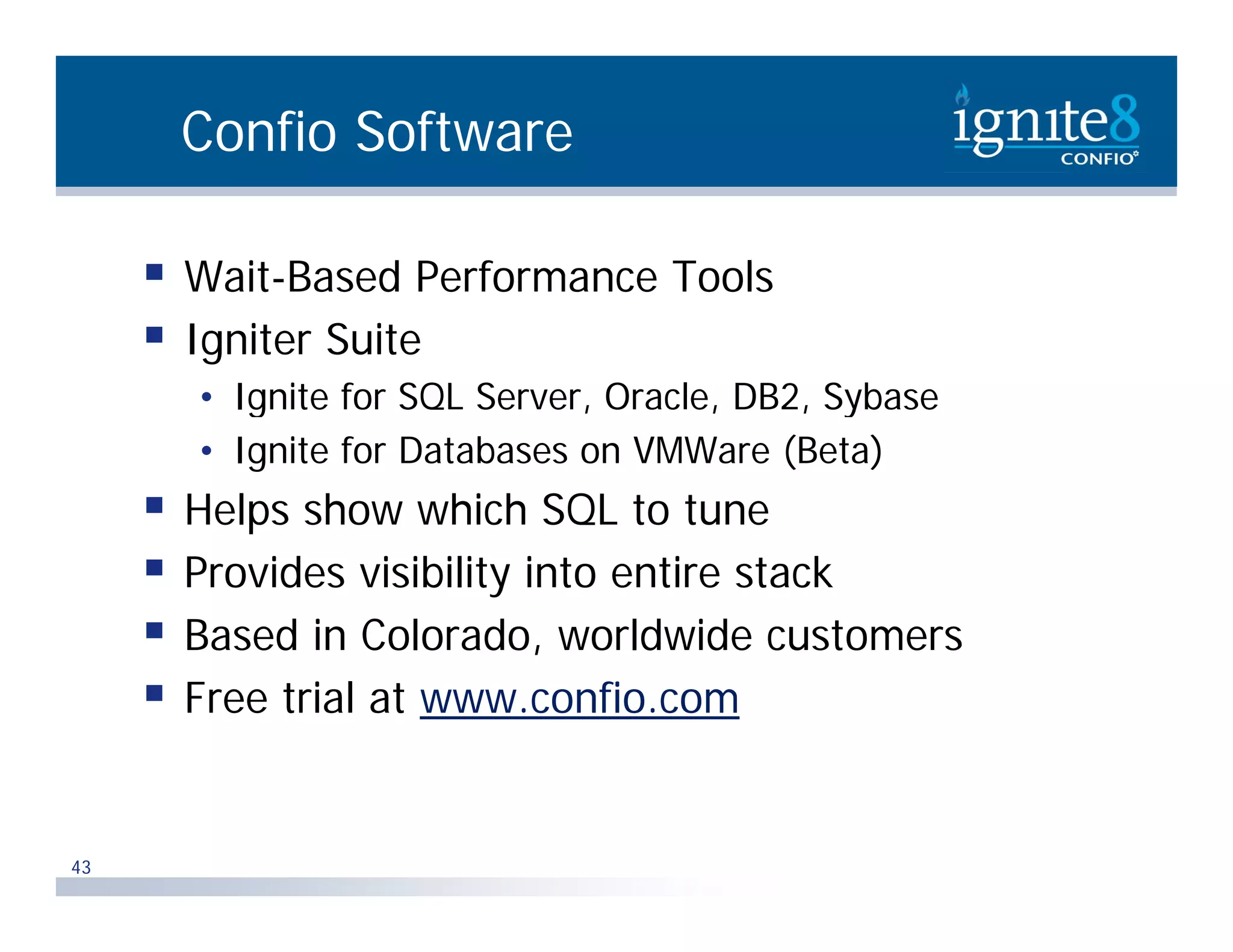The document is a presentation by Dean Richards on Microsoft SQL Server query tuning, highlighting the importance of tuning SQL queries for optimal performance due to their significant impact on application efficiency. It outlines the role of DBAs and developers in query tuning, the use of wait states to diagnose slow SQL performance, and various techniques and tools for optimizing queries, including indexing strategies. Key takeaways emphasize the value of real execution plans and collaborative efforts in identifying and resolving performance issues.


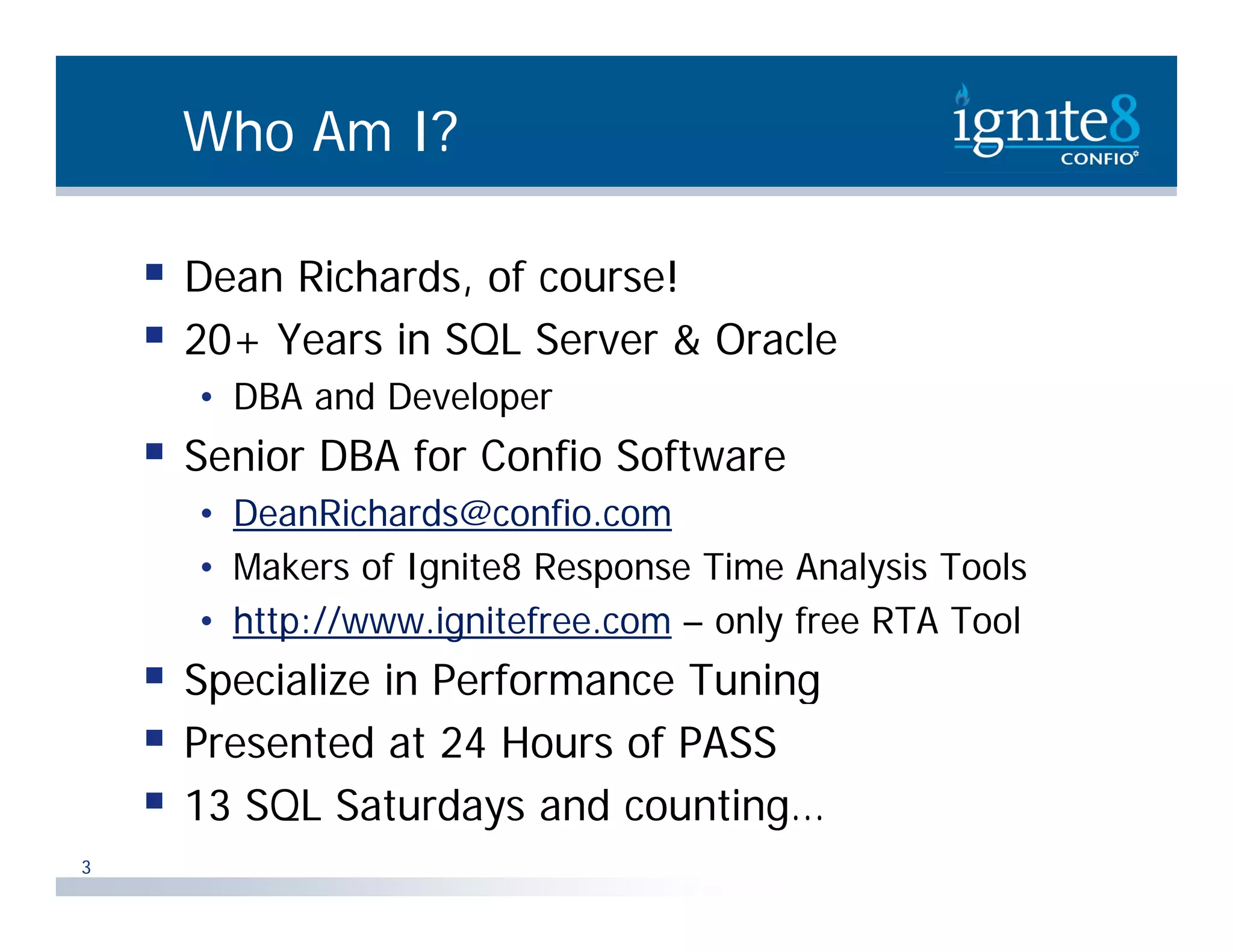
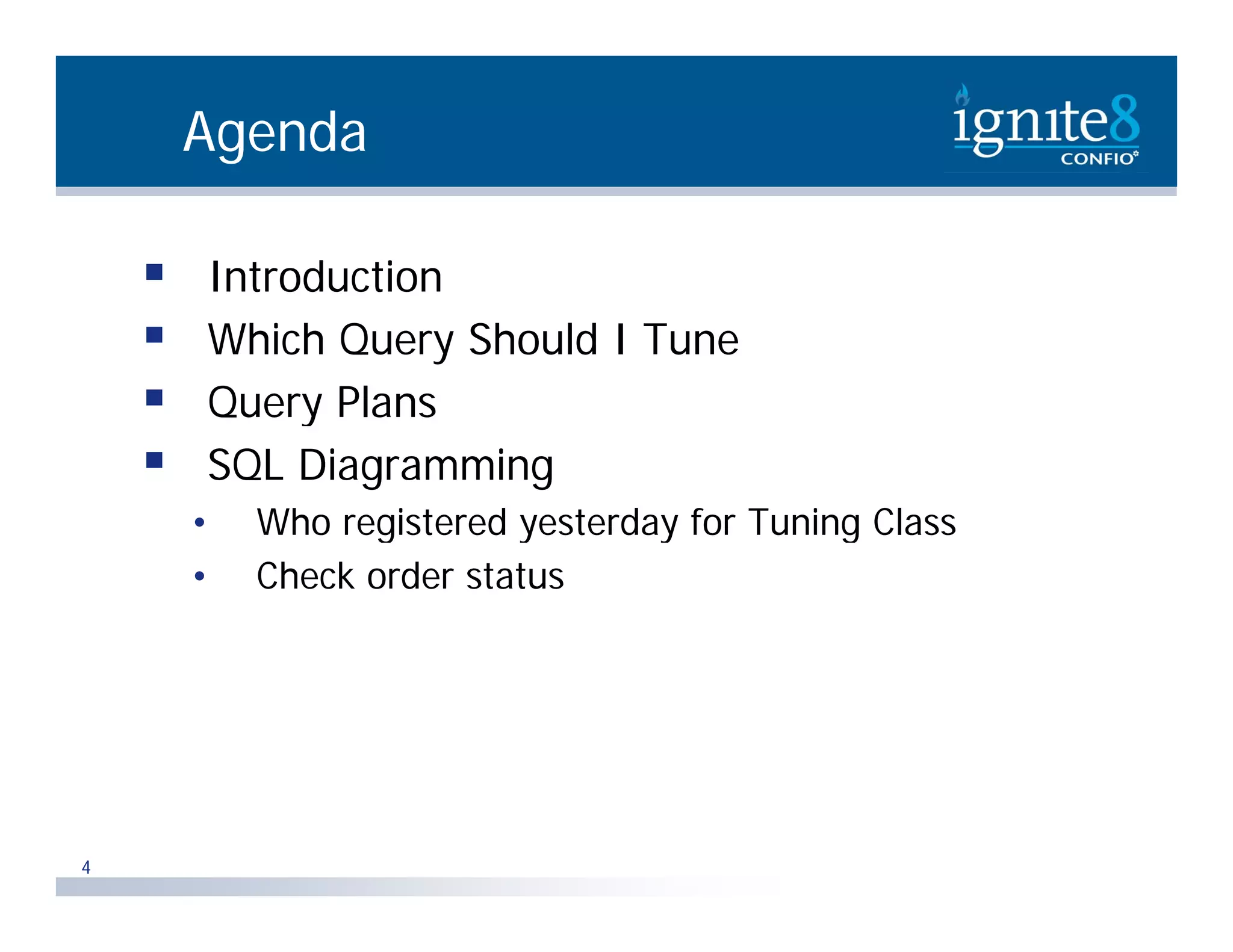

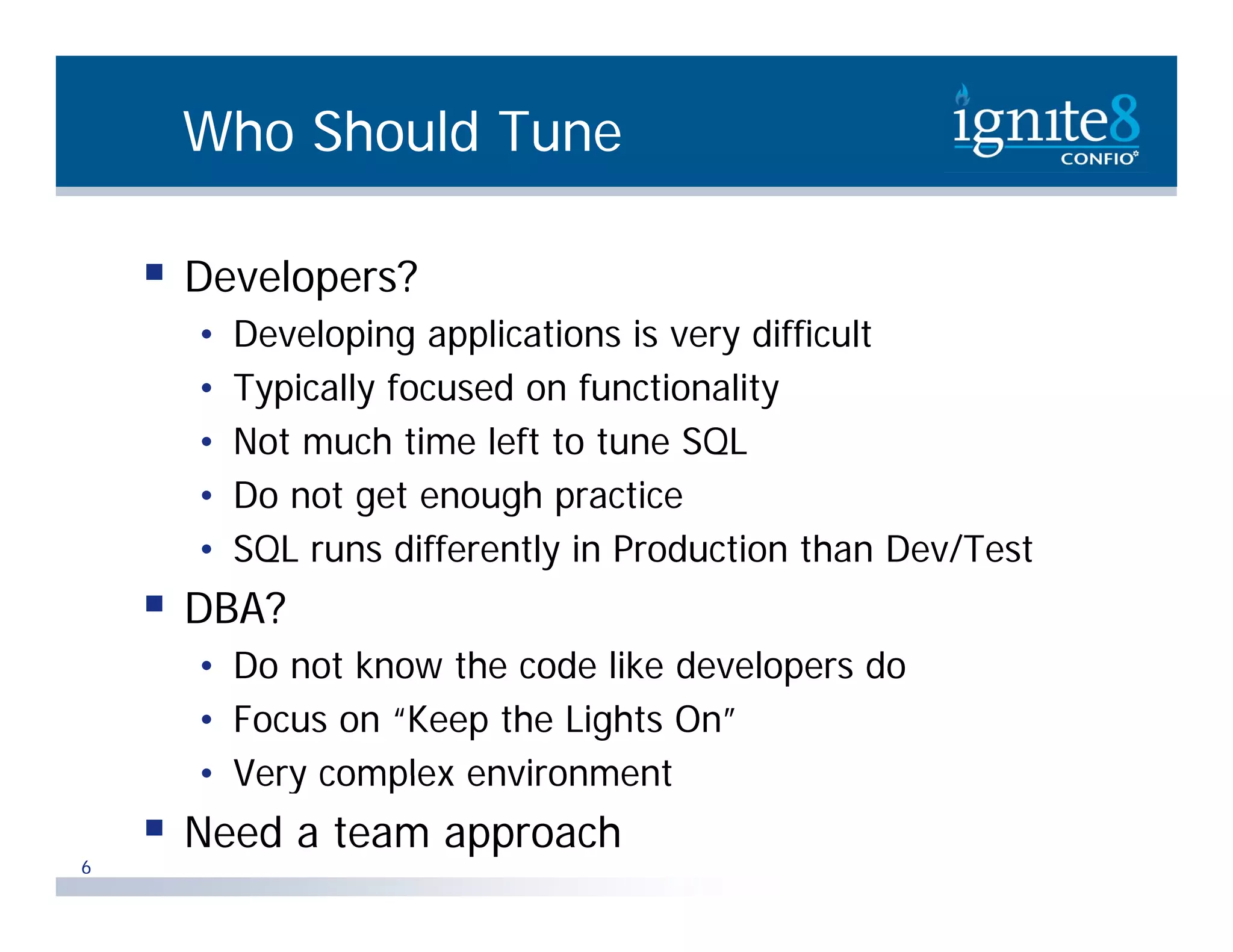
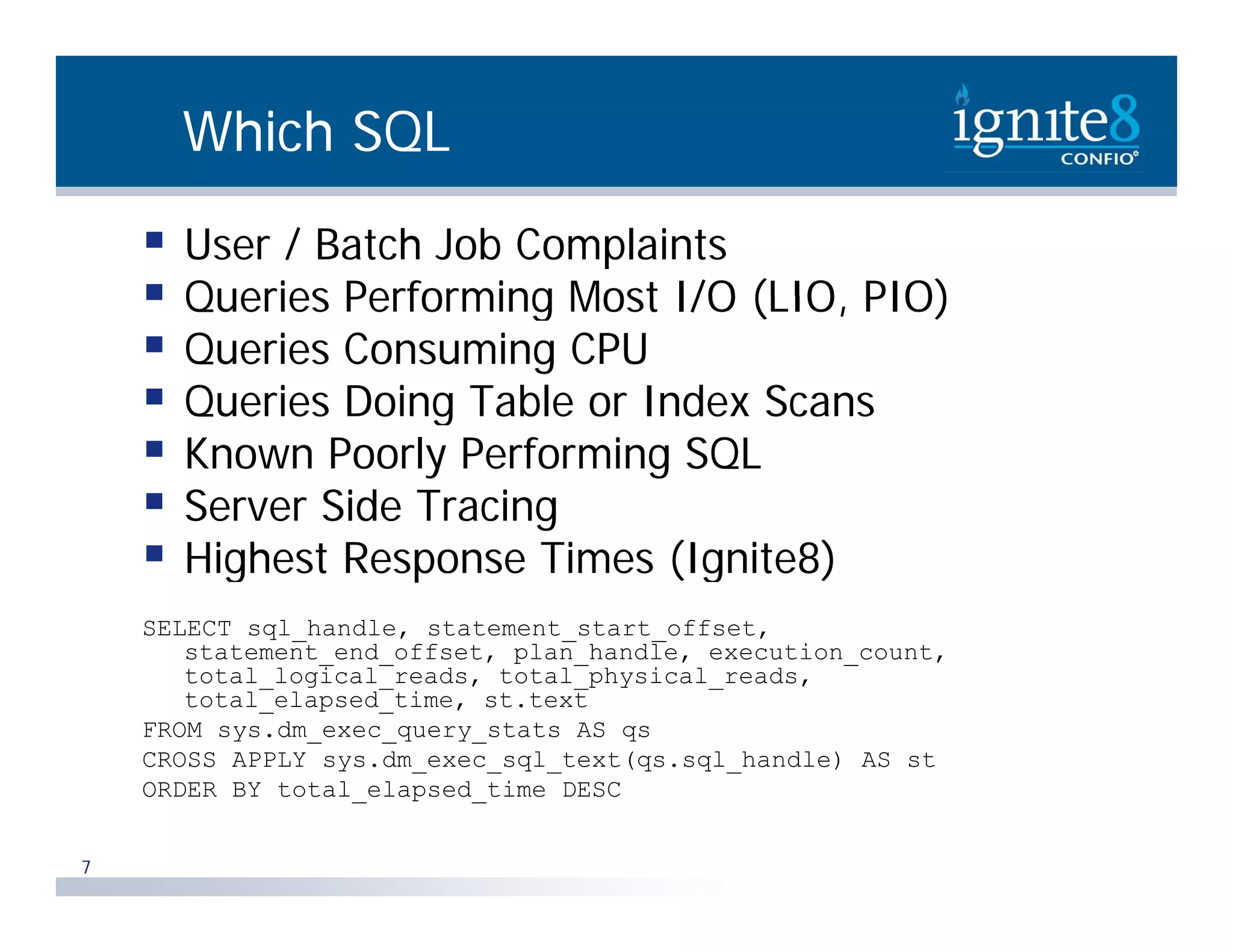

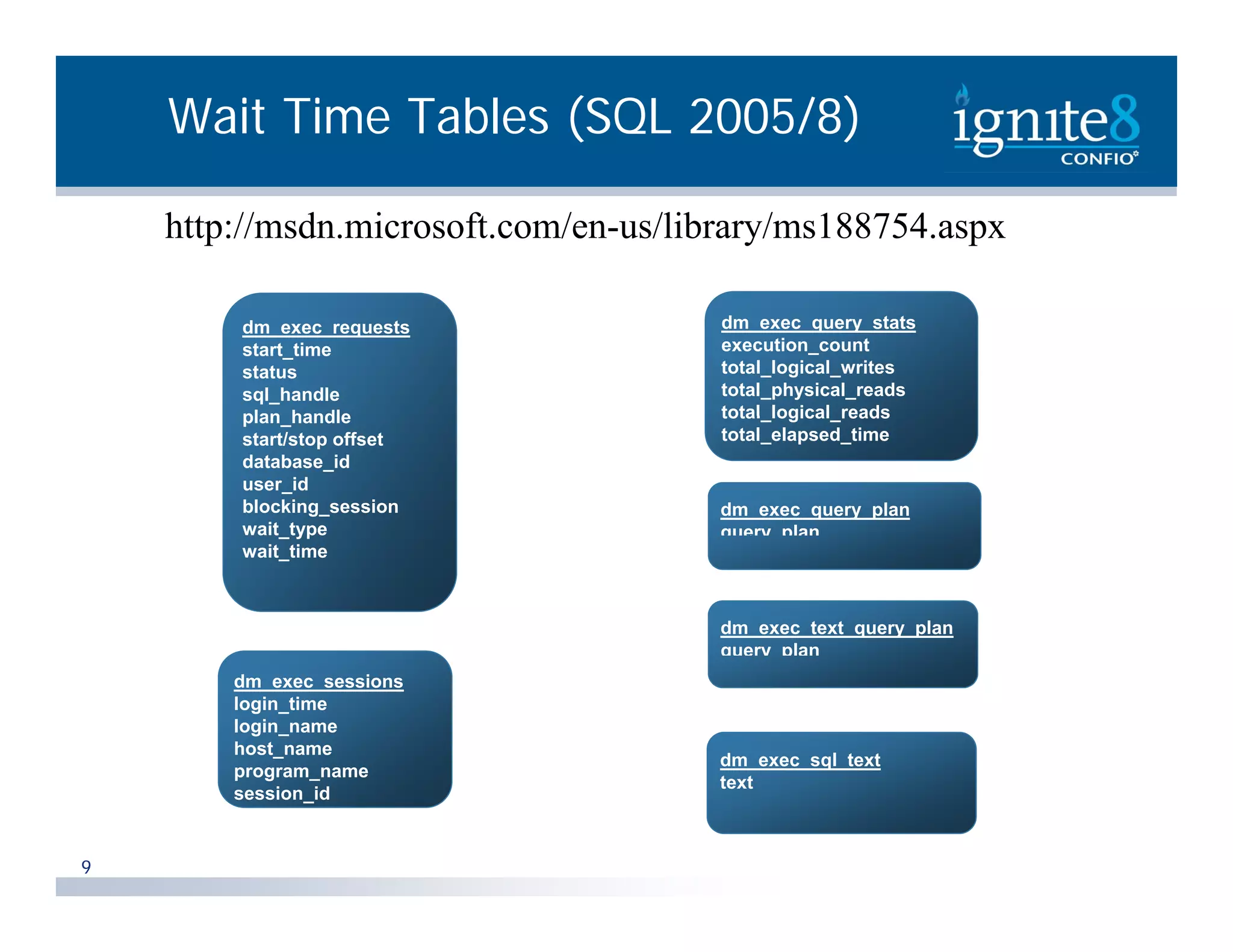
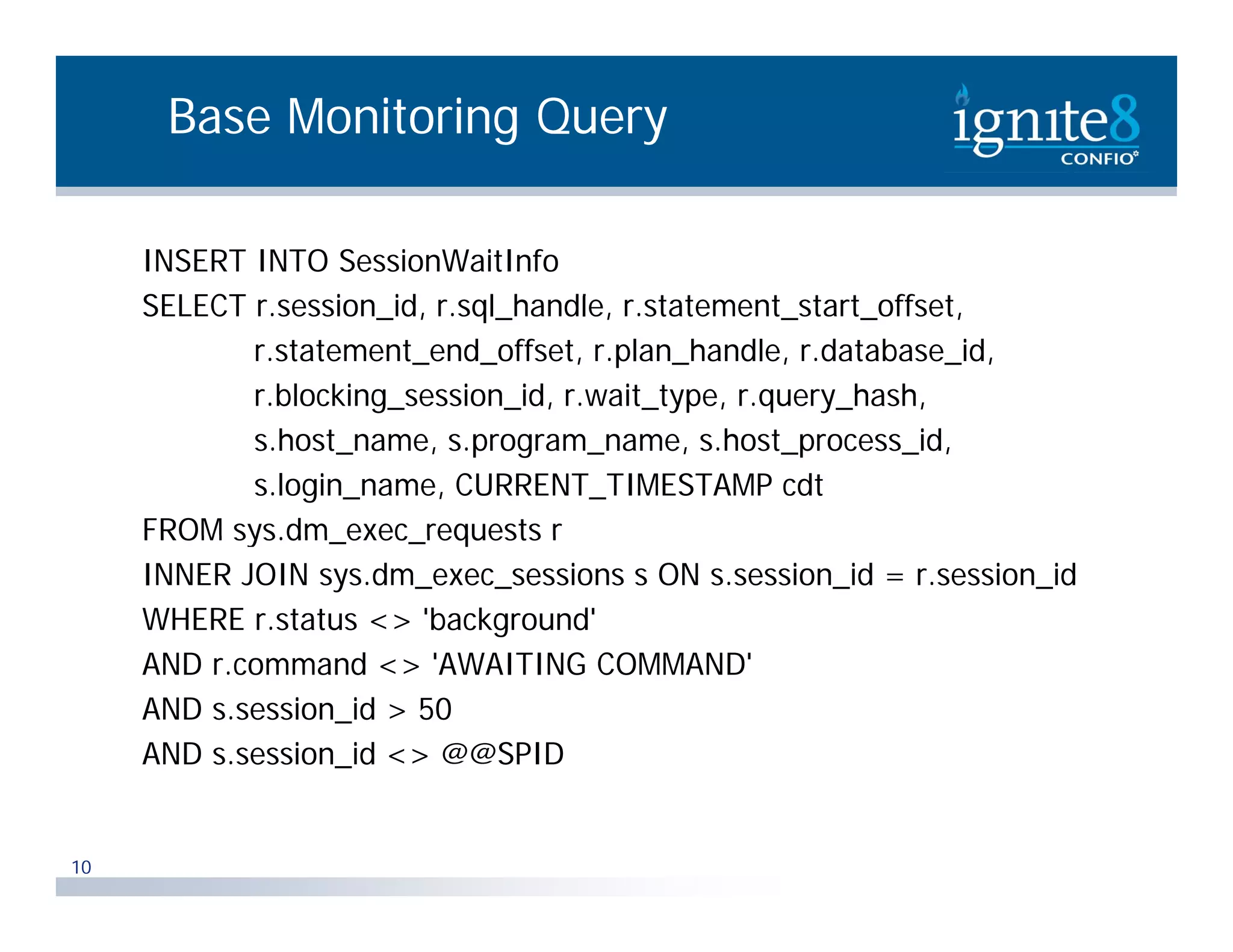
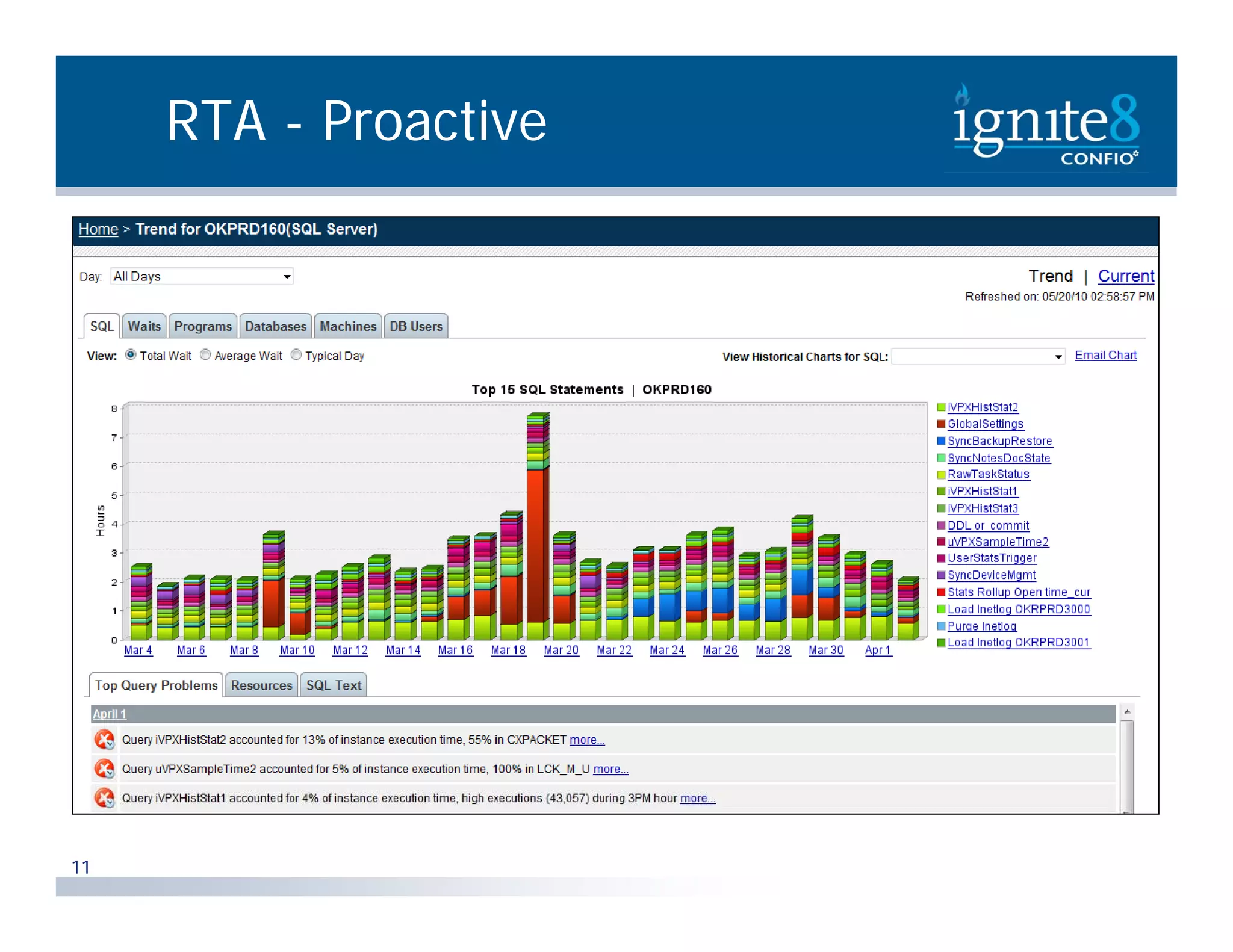
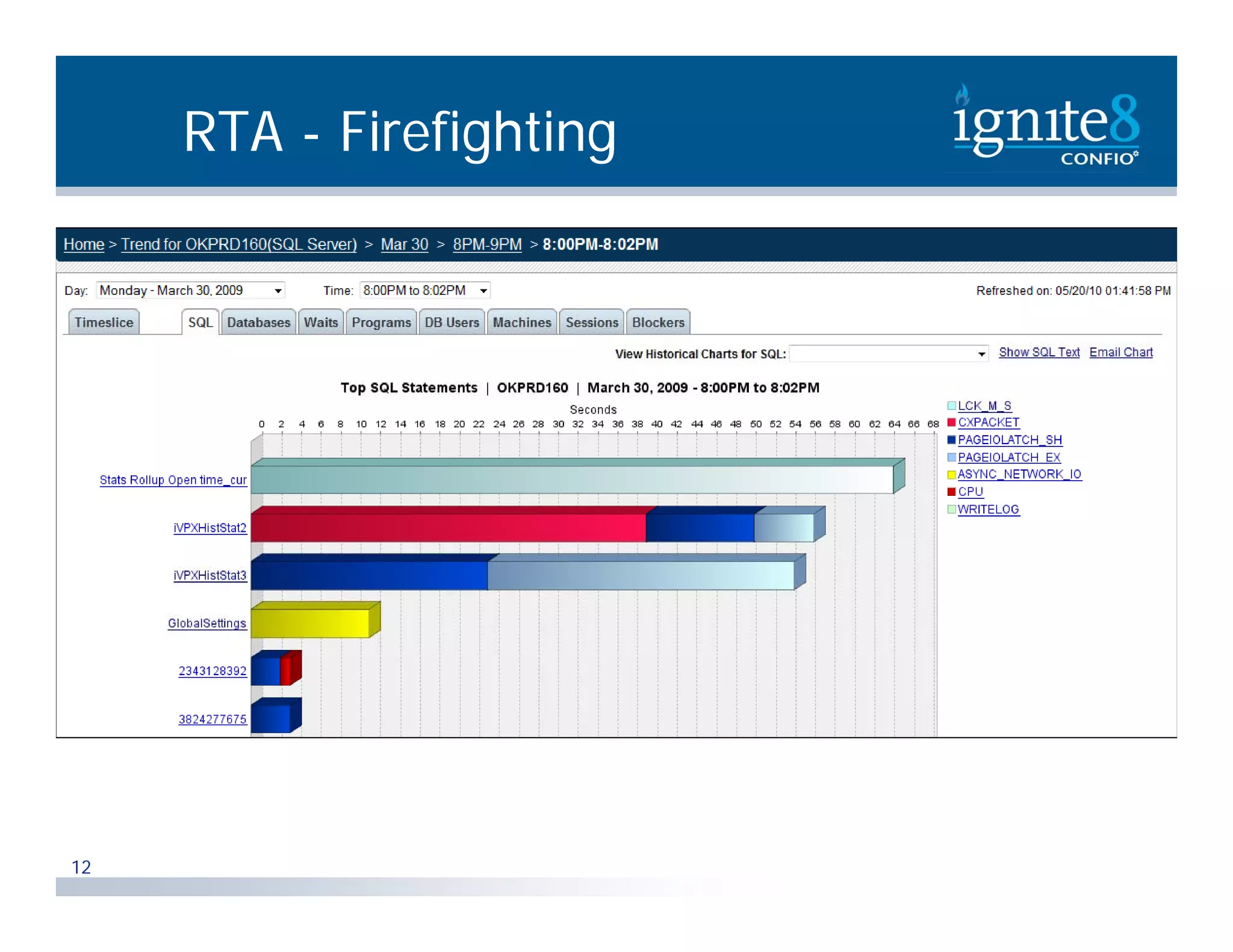
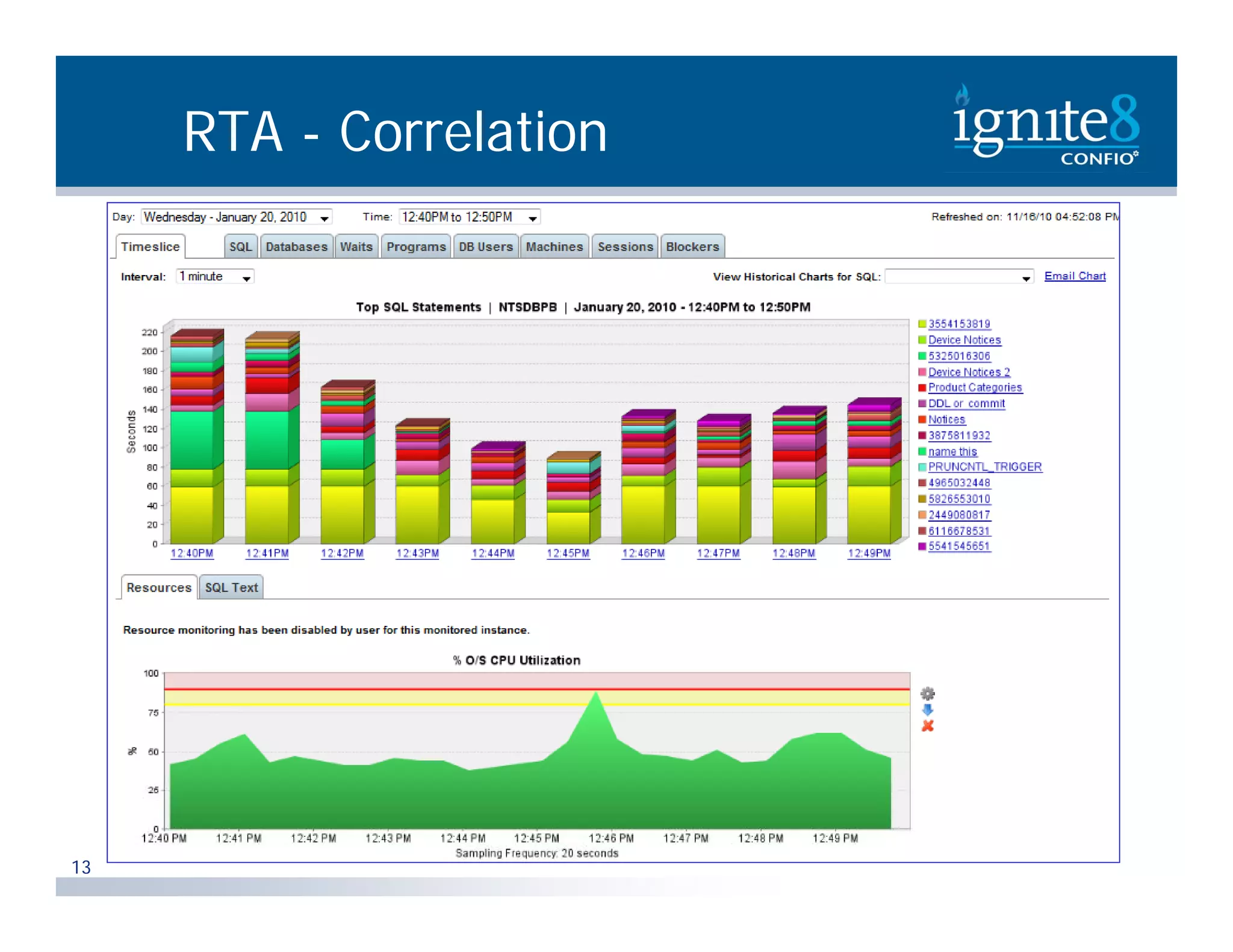
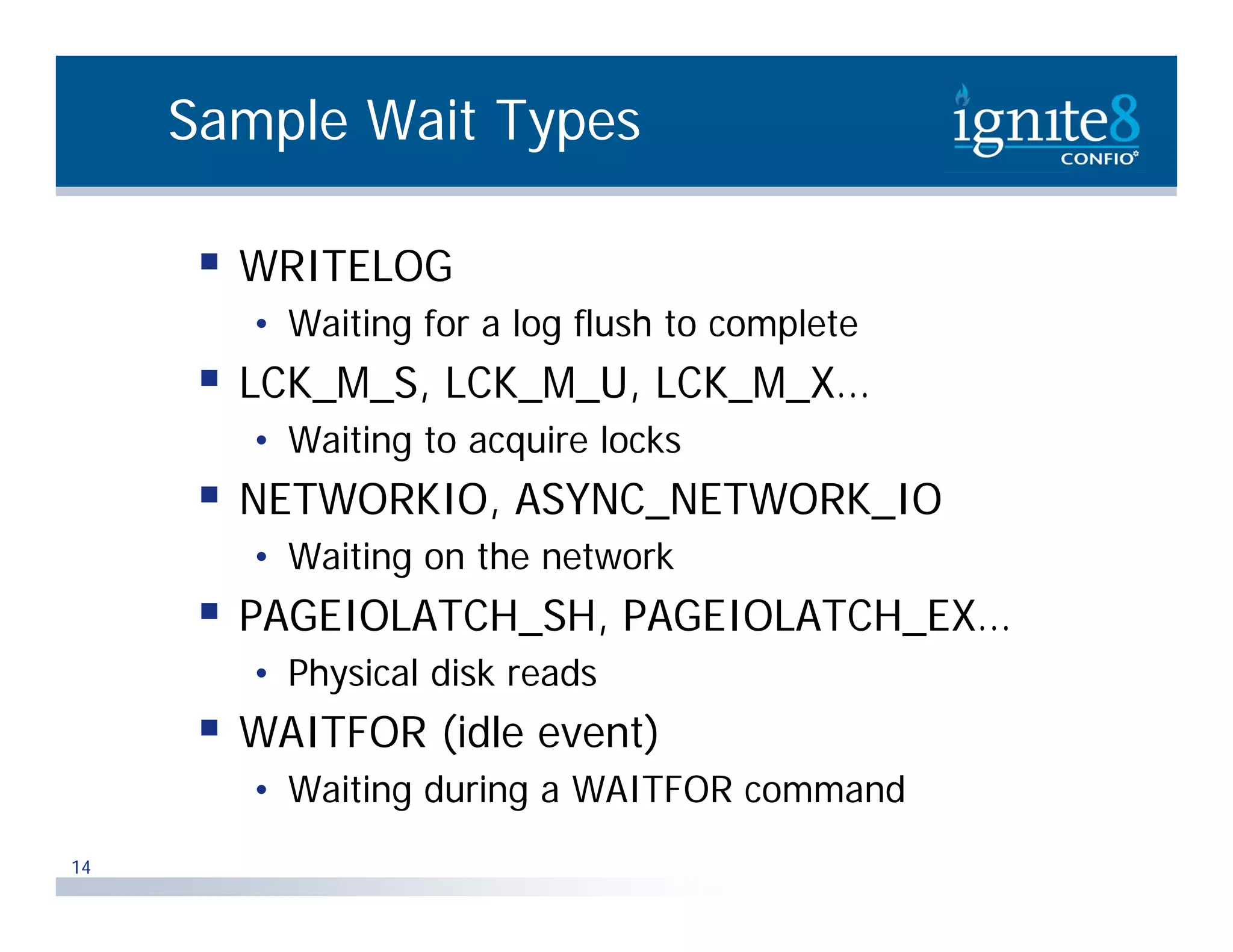
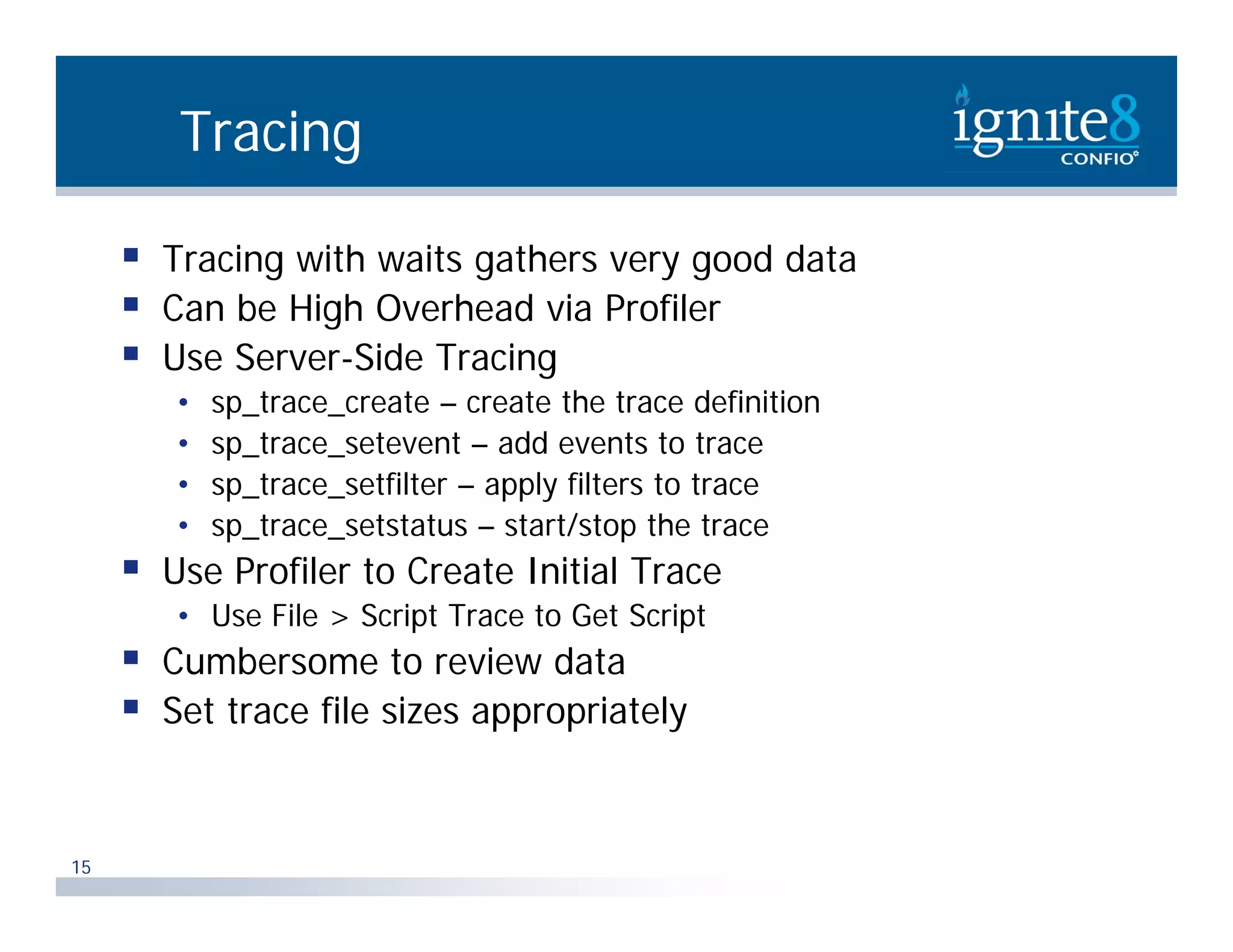
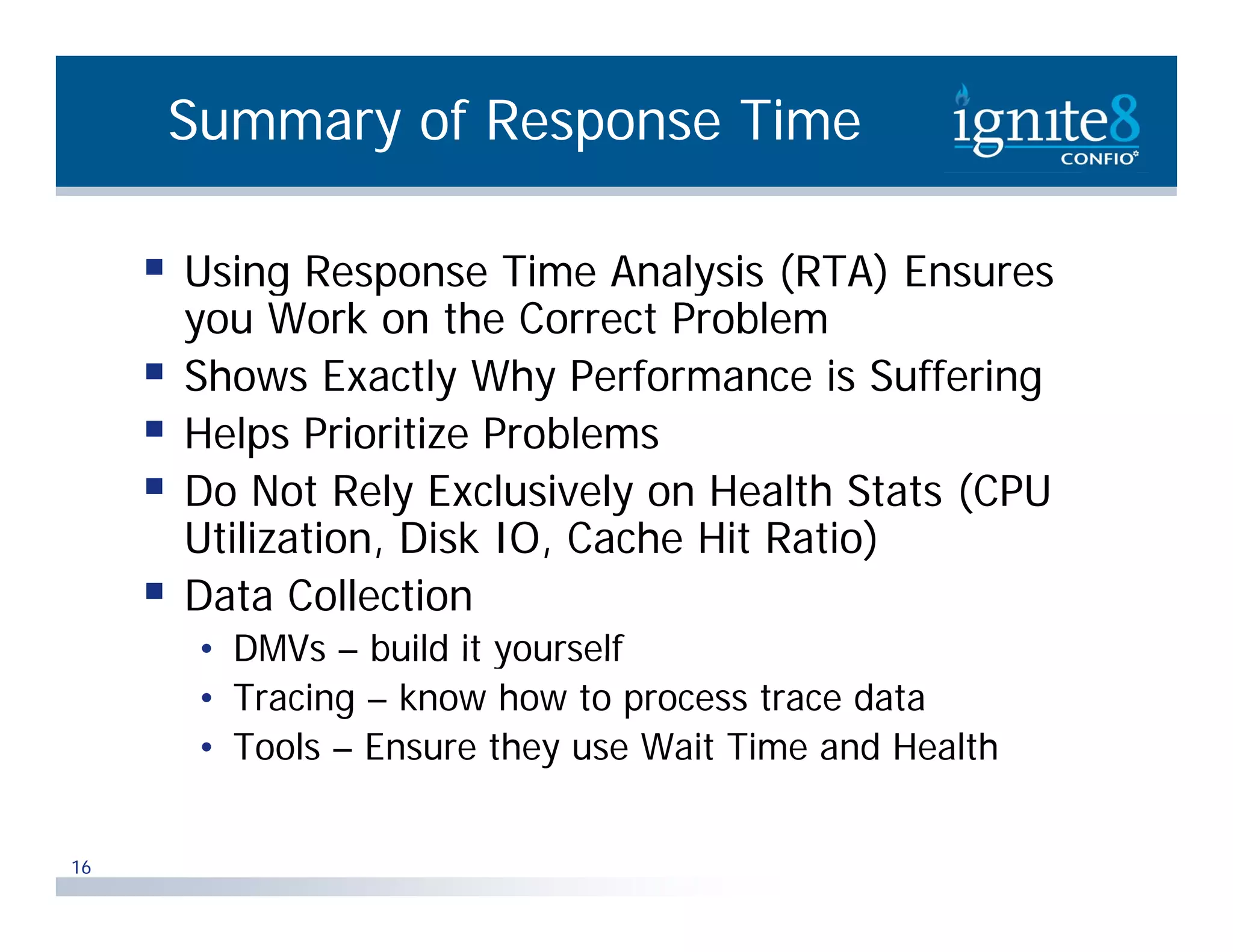
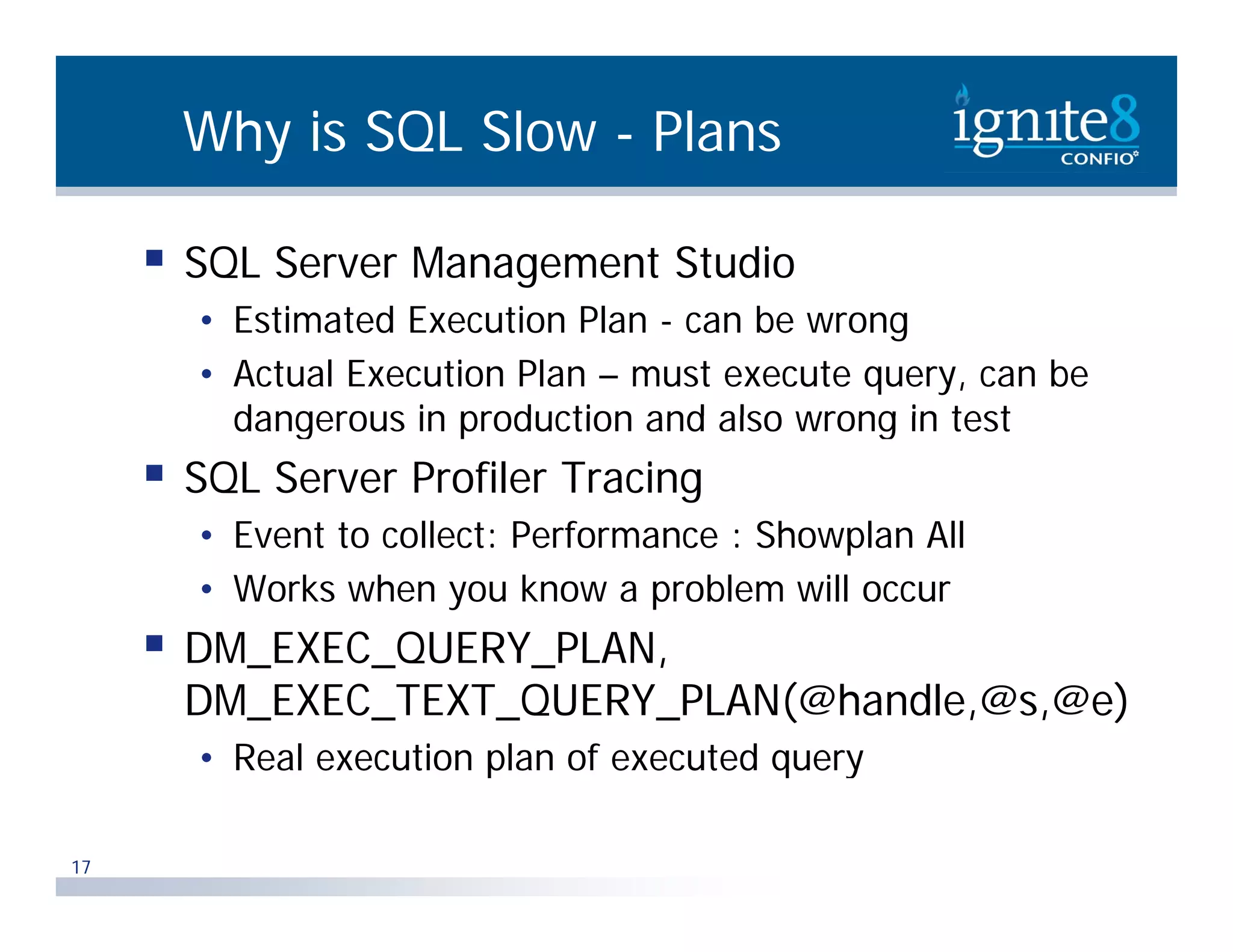
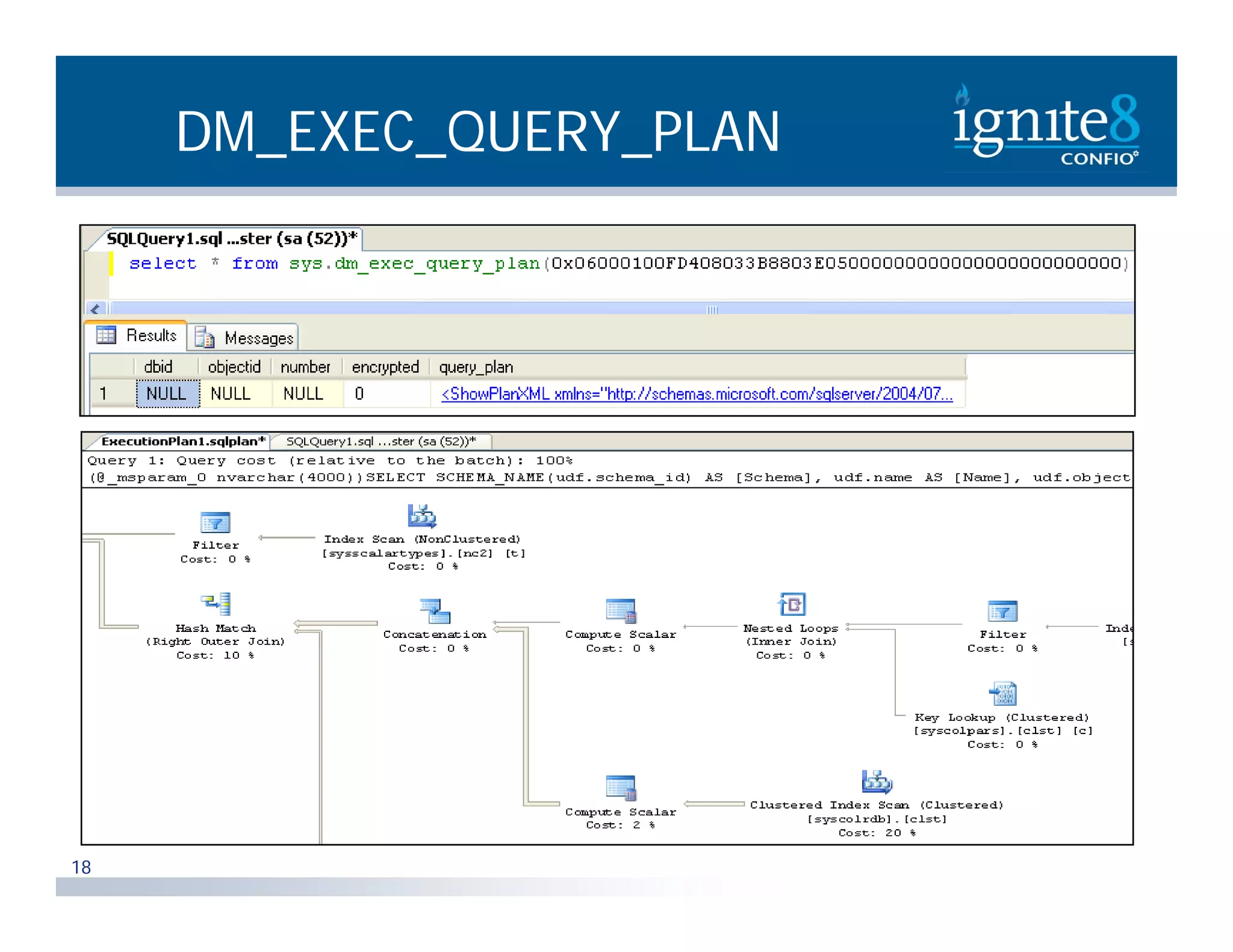
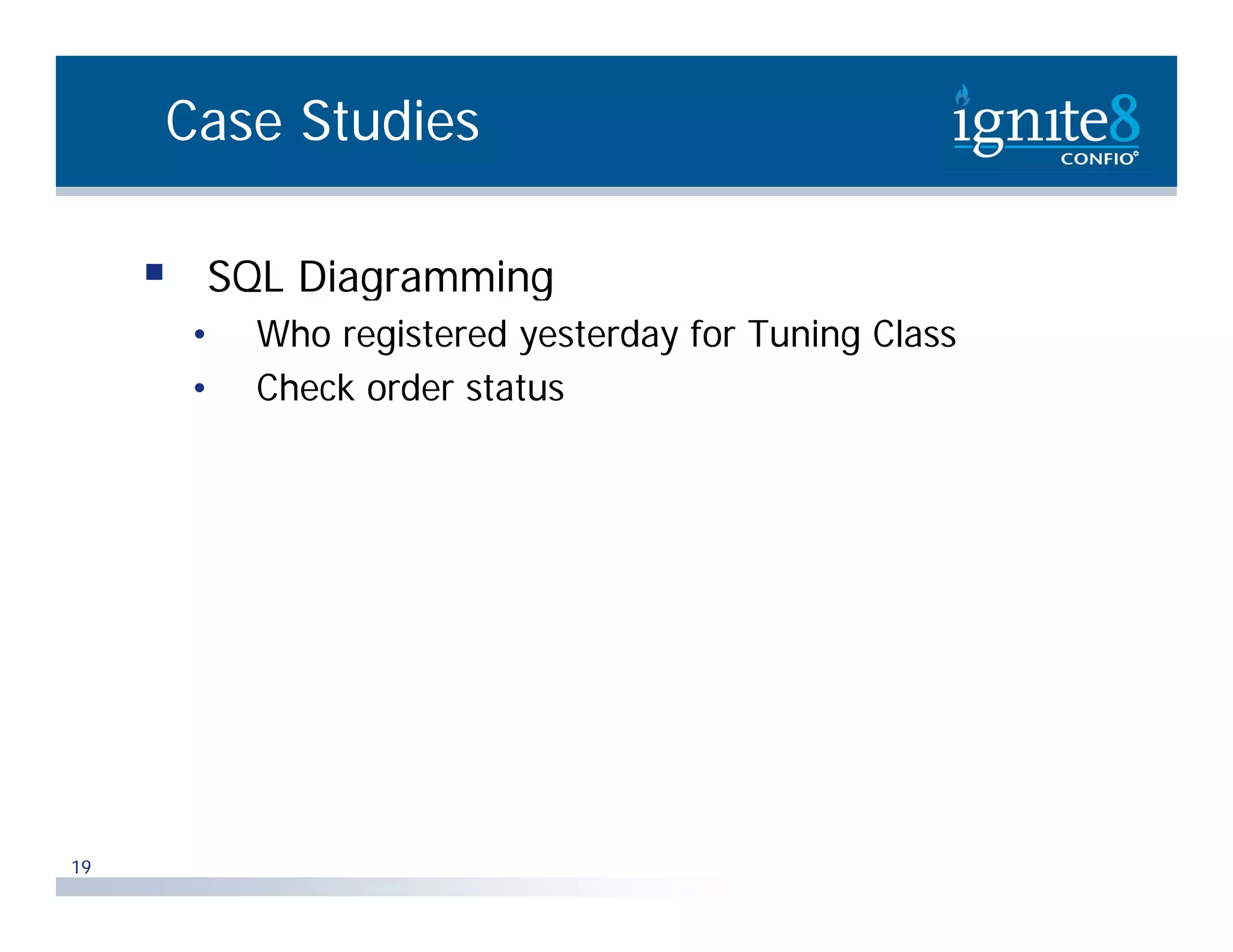
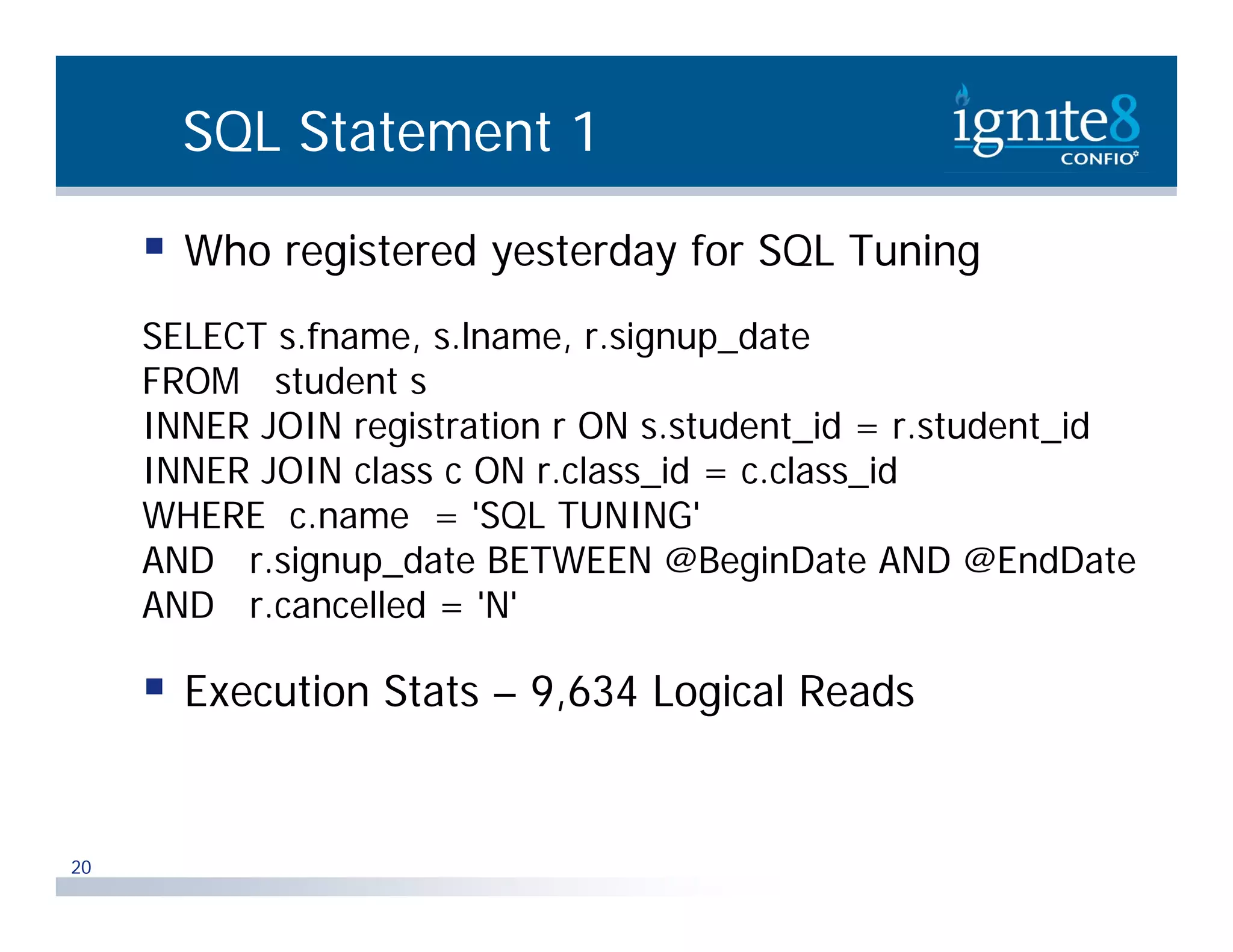
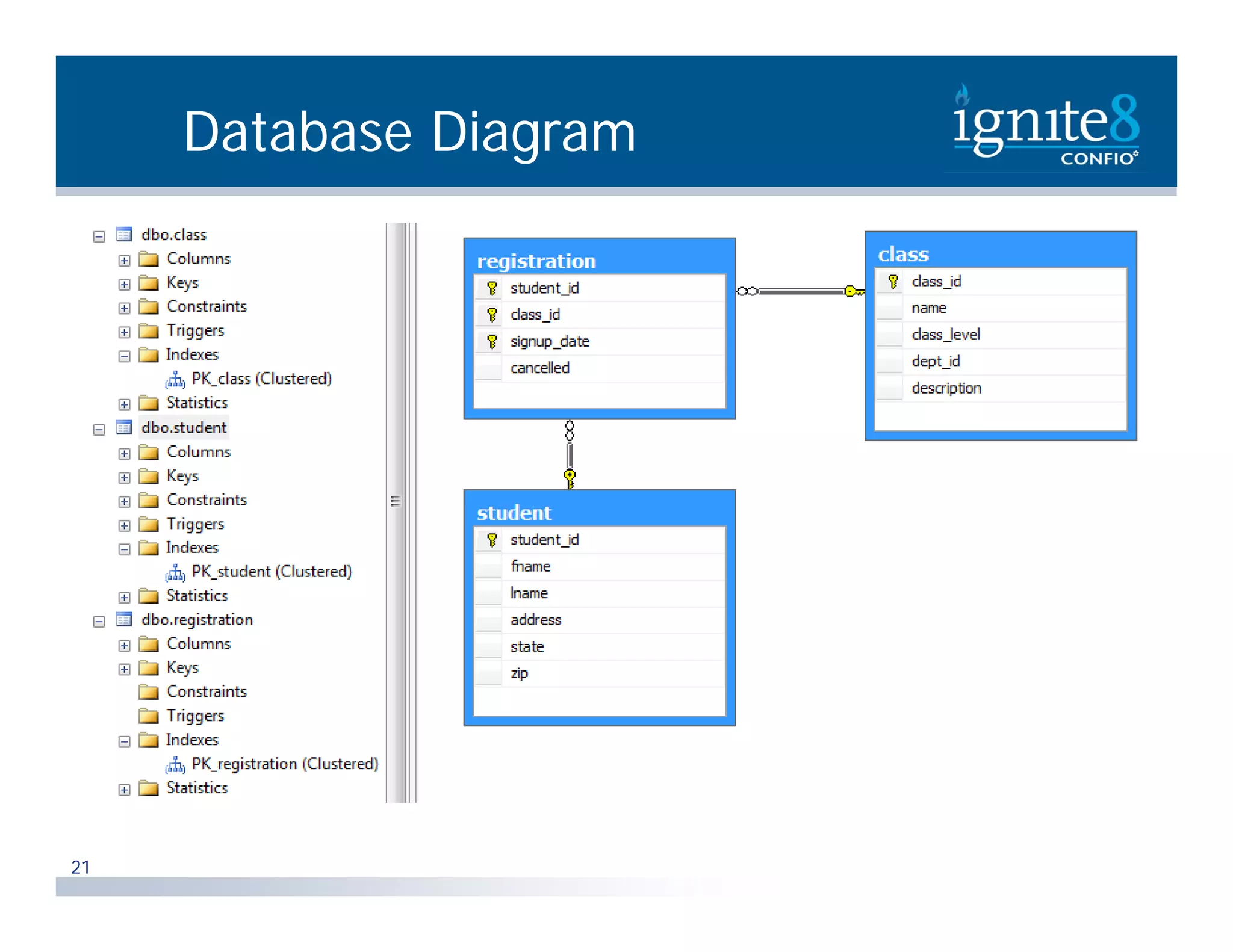
![Execution Plan Recommendation from SSMS R d ti f CREATE NONCLUSTERED INDEX [<Name of Missing Index>] ON [dbo].[registration] ([cancelled],[signup_date]) INCLUDE ([student_id],[class_id]) ([student id] [class id]) 22](https://image.slidesharecdn.com/microsoftsqlserverquerytuning-101118141026-phpapp02/75/Microsoft-SQL-Server-Query-Tuning-22-2048.jpg)
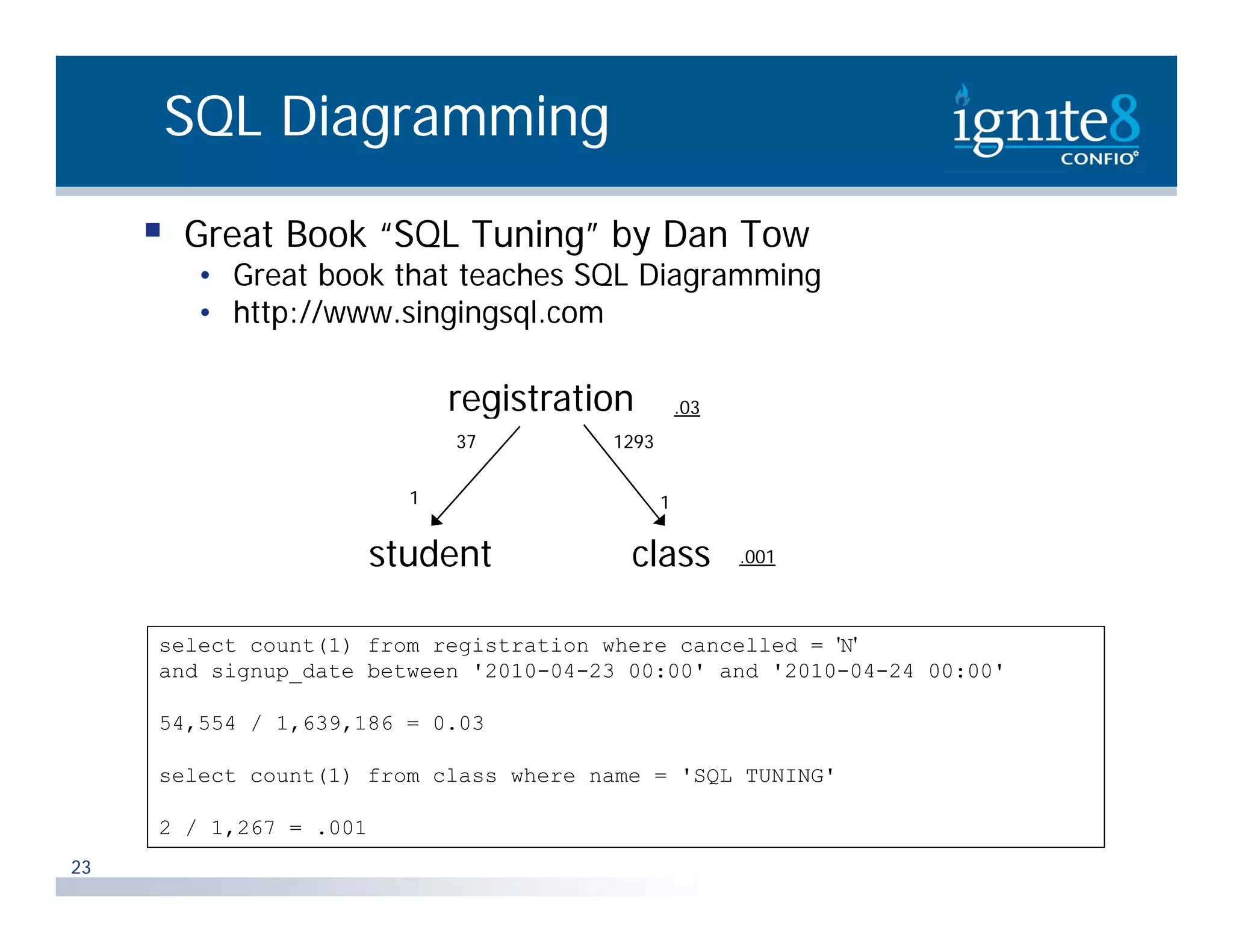
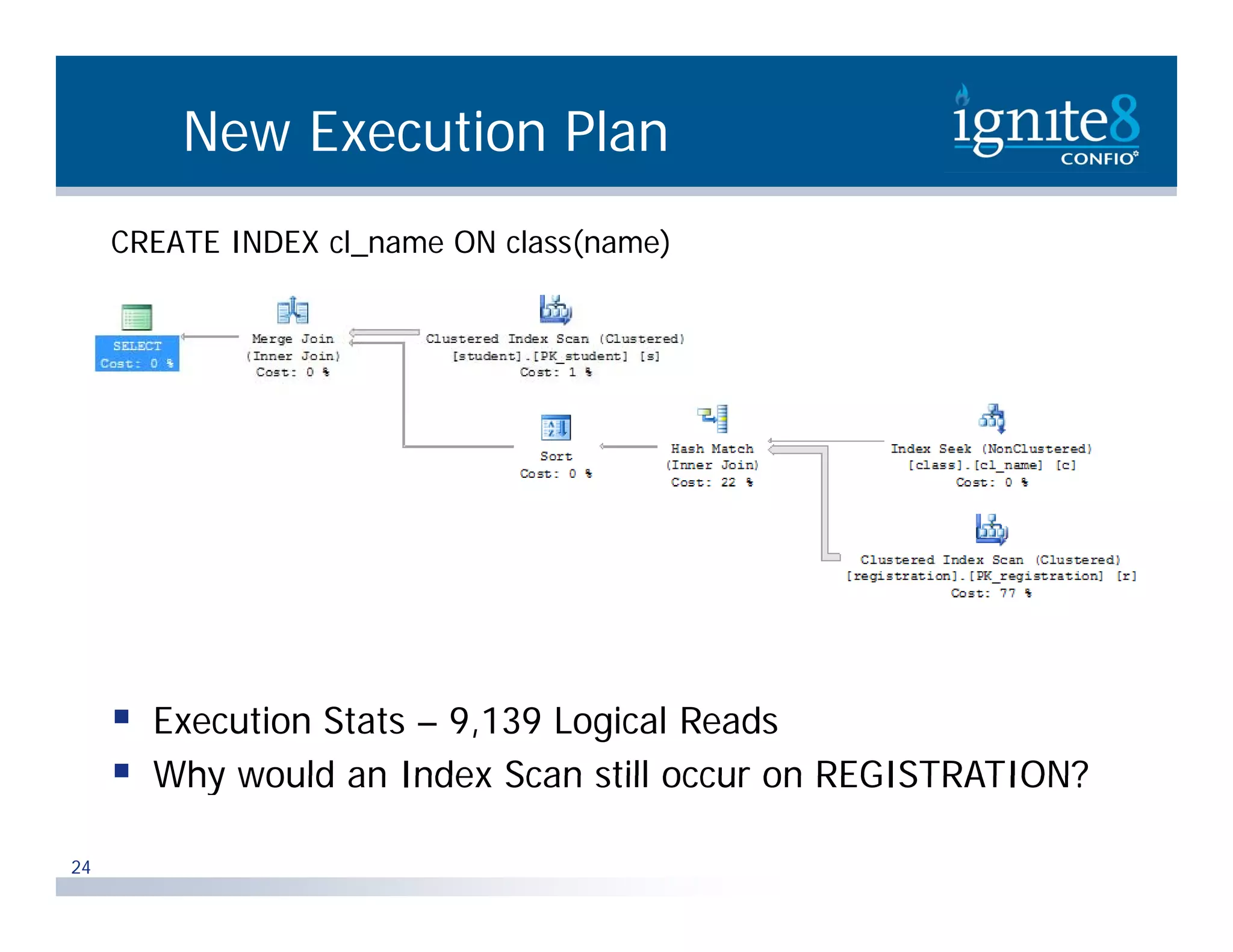
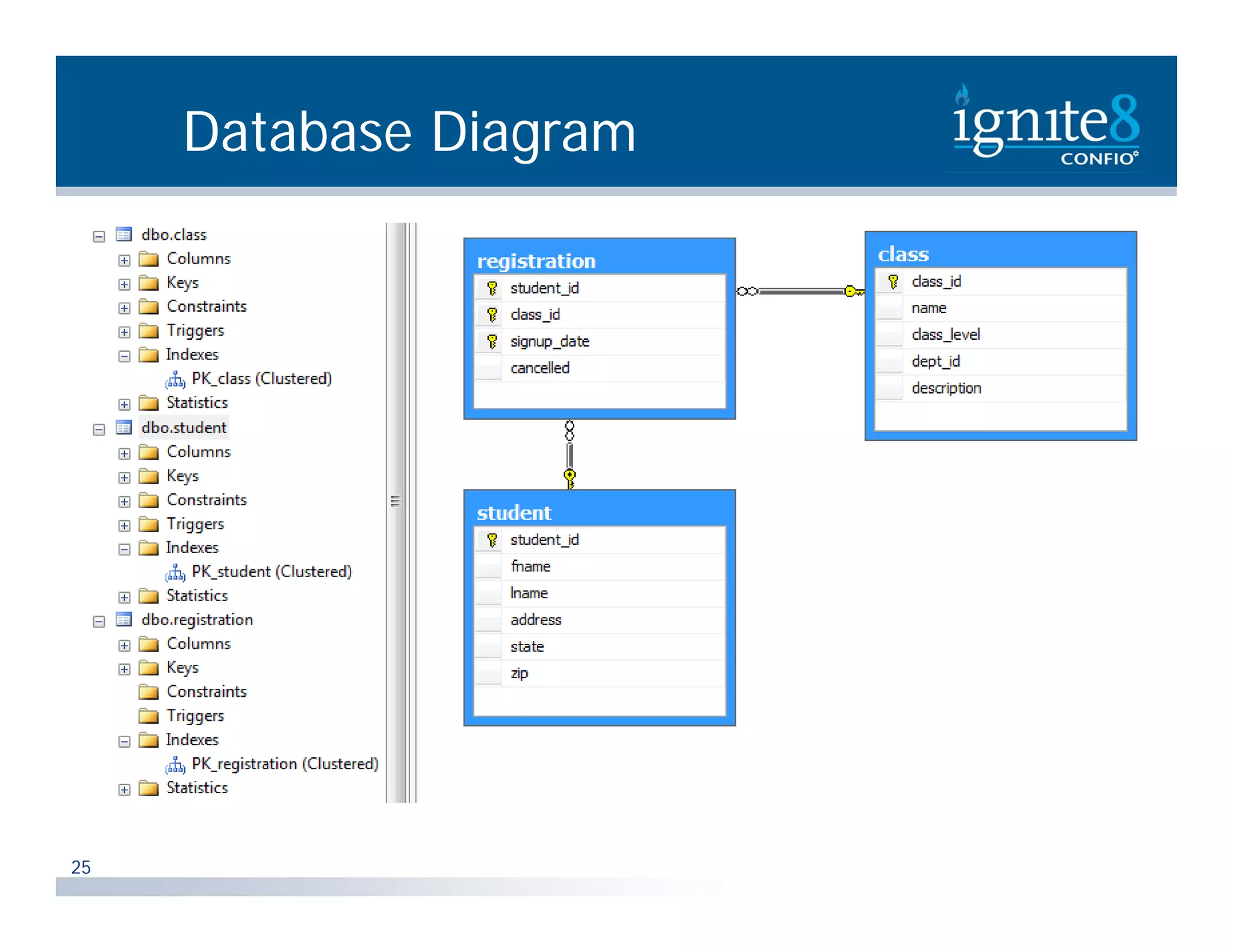
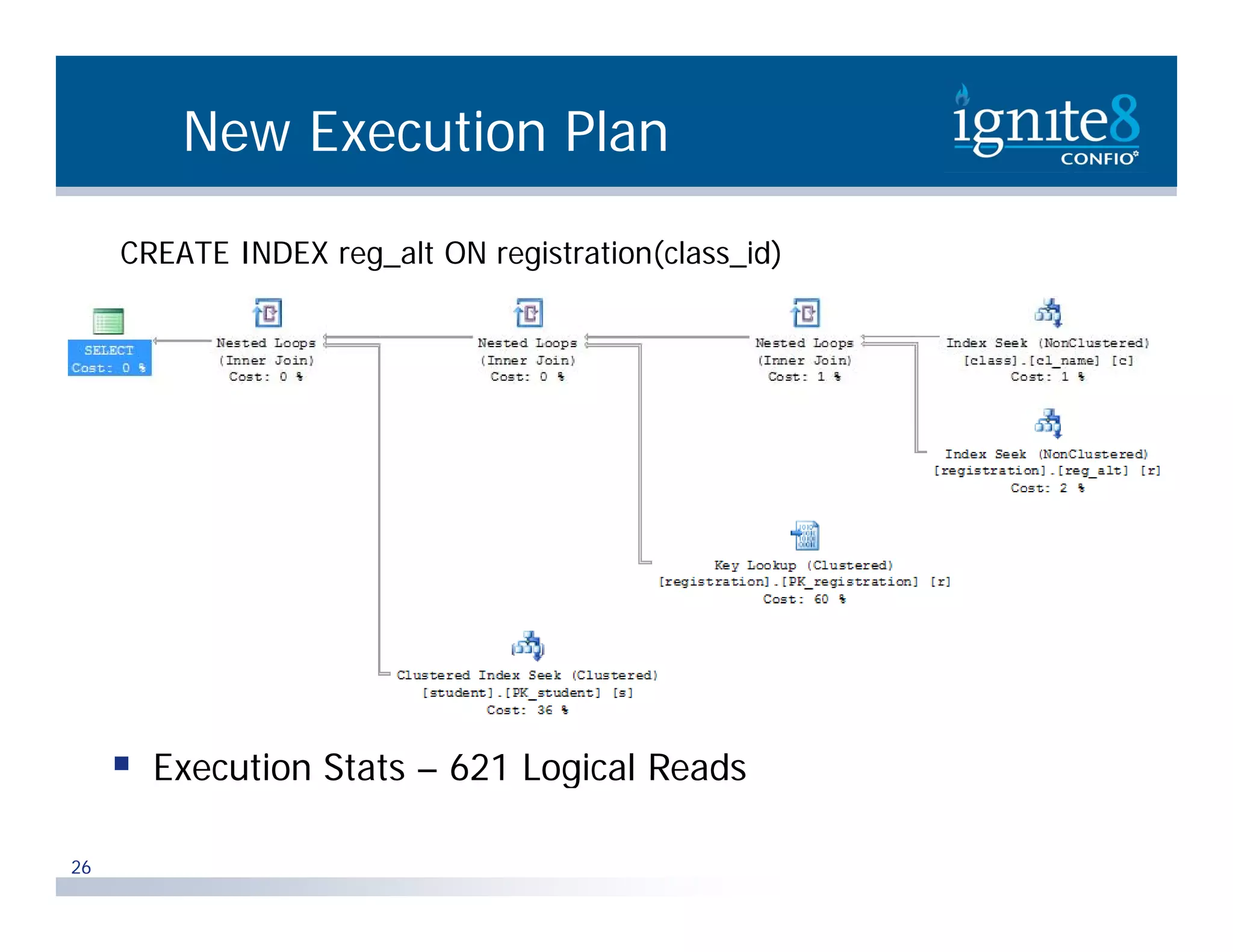
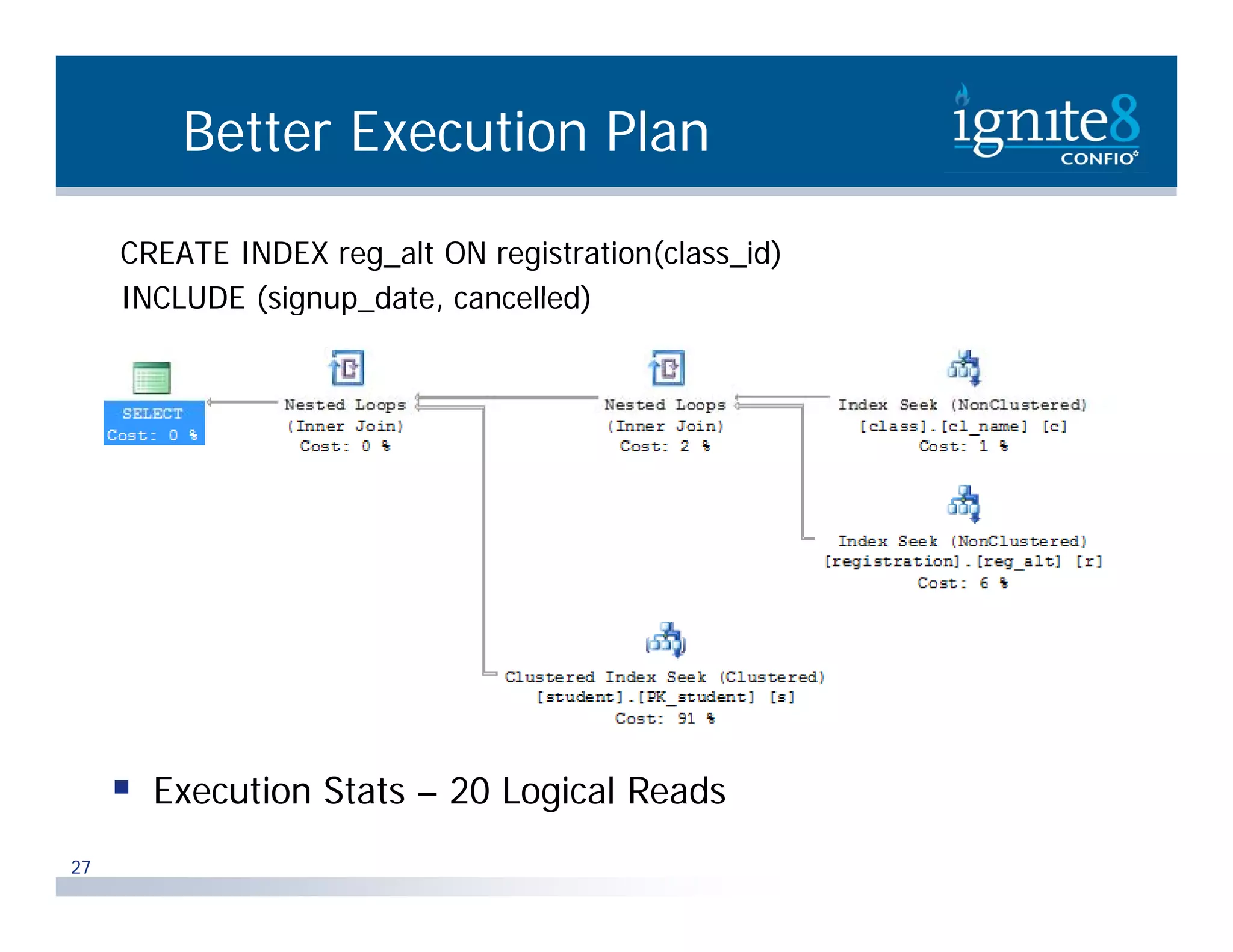
![Alternative from SSMS CREATE INDEX reg_can ON registration(cancelled, signup_date) INCLUDE (class_id, student_id) Execution Stats – 595 Logical Reads CREATE NONCLUSTERED INDEX [<Name of Missing Index>] ON [dbo].[registration] ([class_id],[cancelled],[signup_date]) 28 INCLUDE ([student_id])](https://image.slidesharecdn.com/microsoftsqlserverquerytuning-101118141026-phpapp02/75/Microsoft-SQL-Server-Query-Tuning-28-2048.jpg)


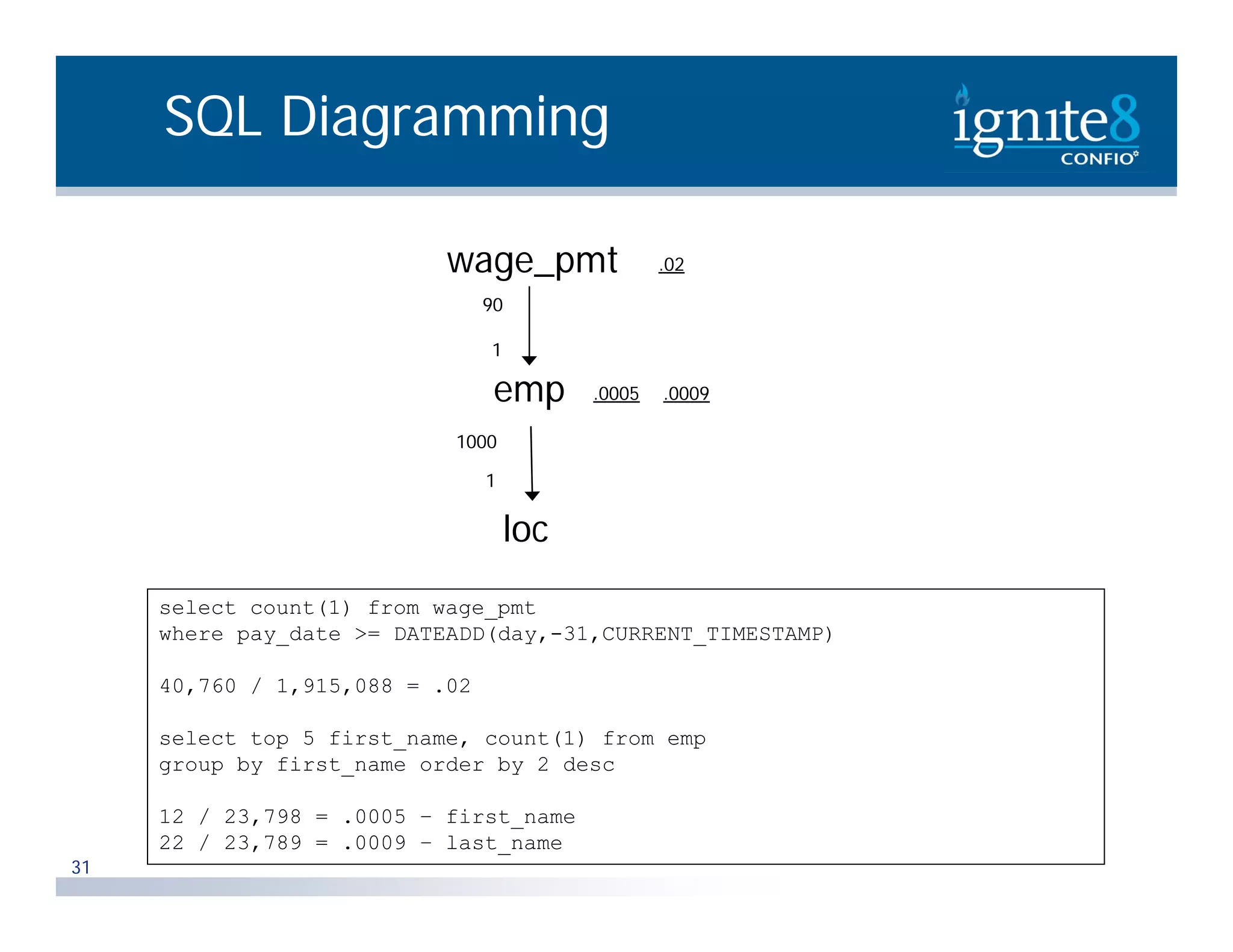
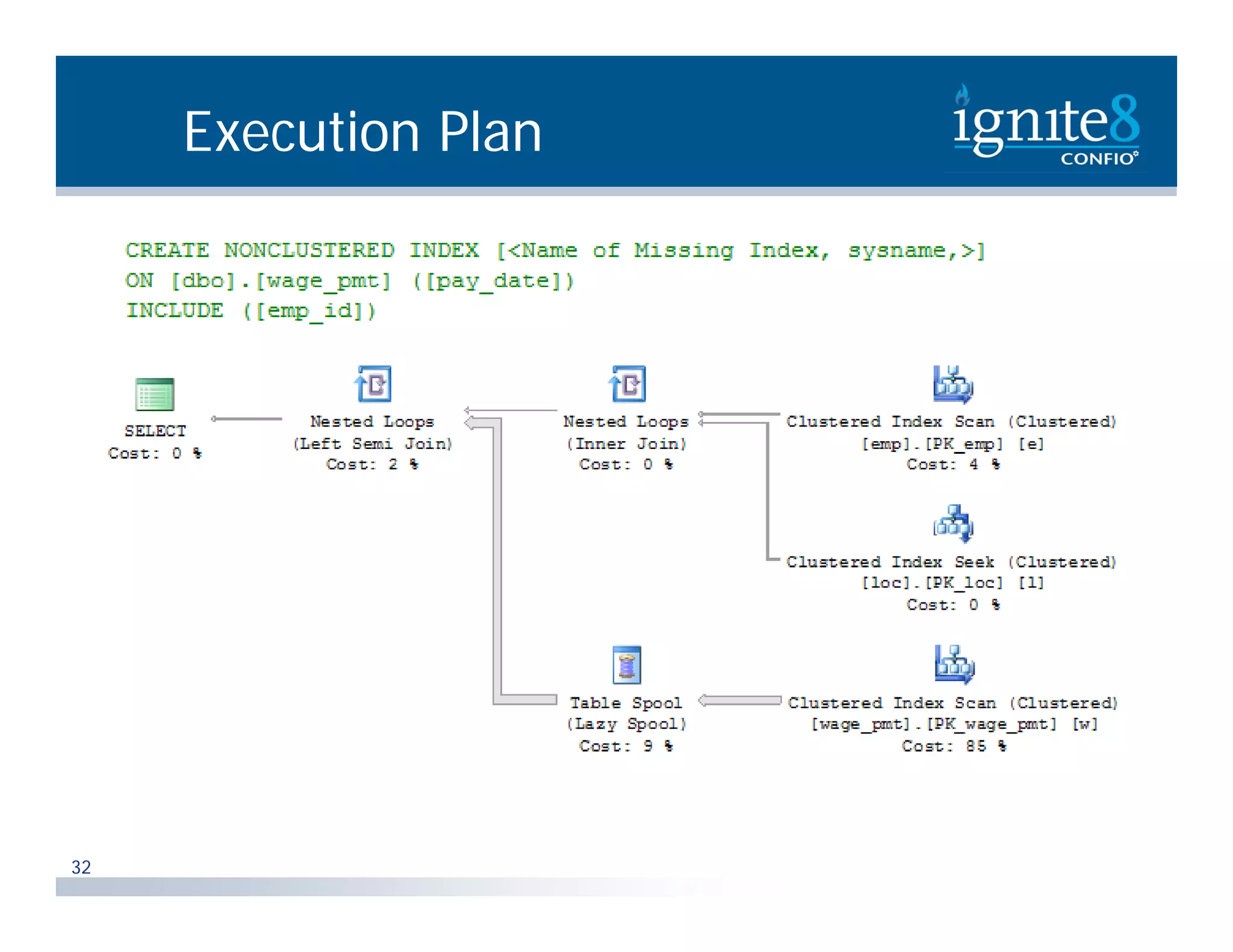
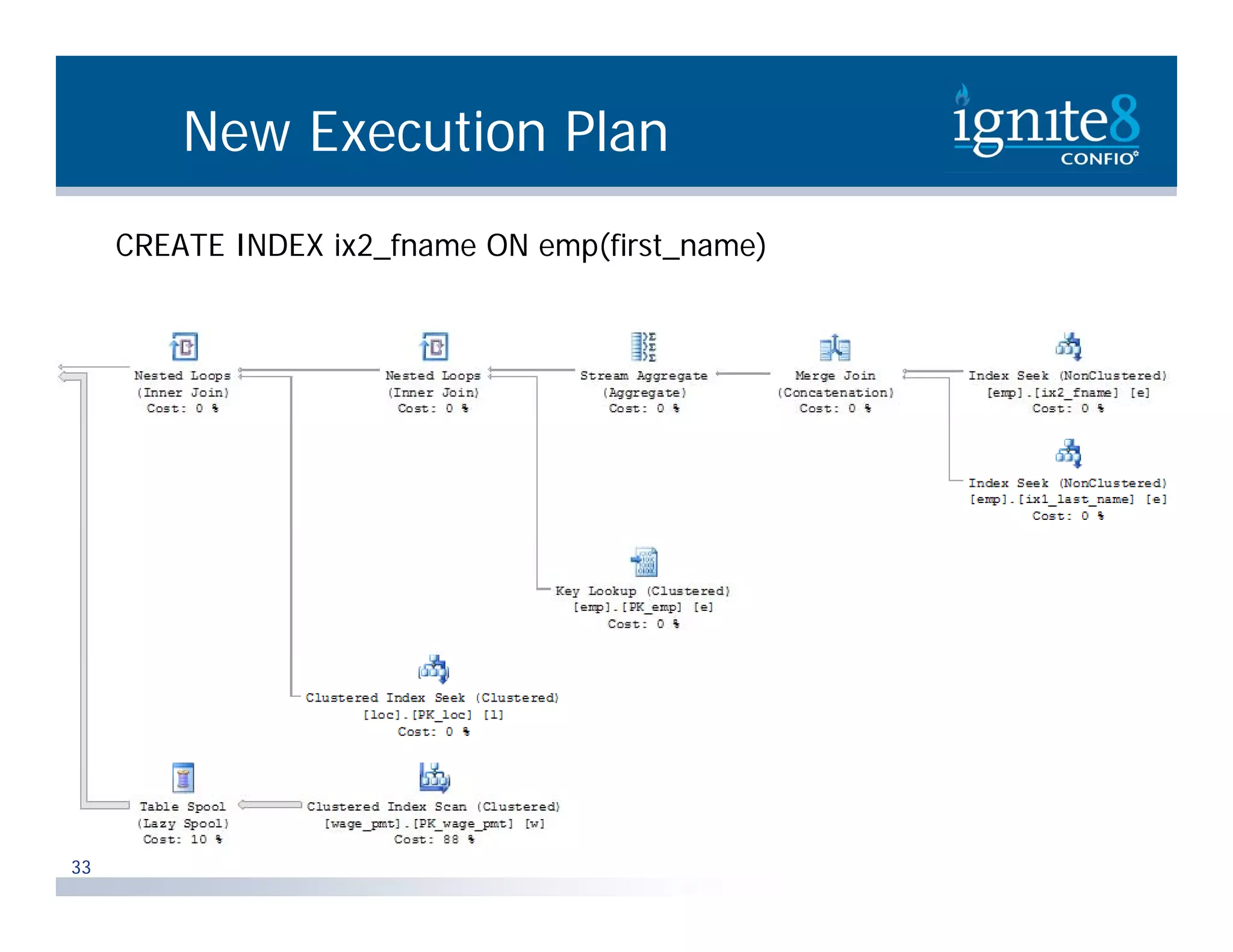
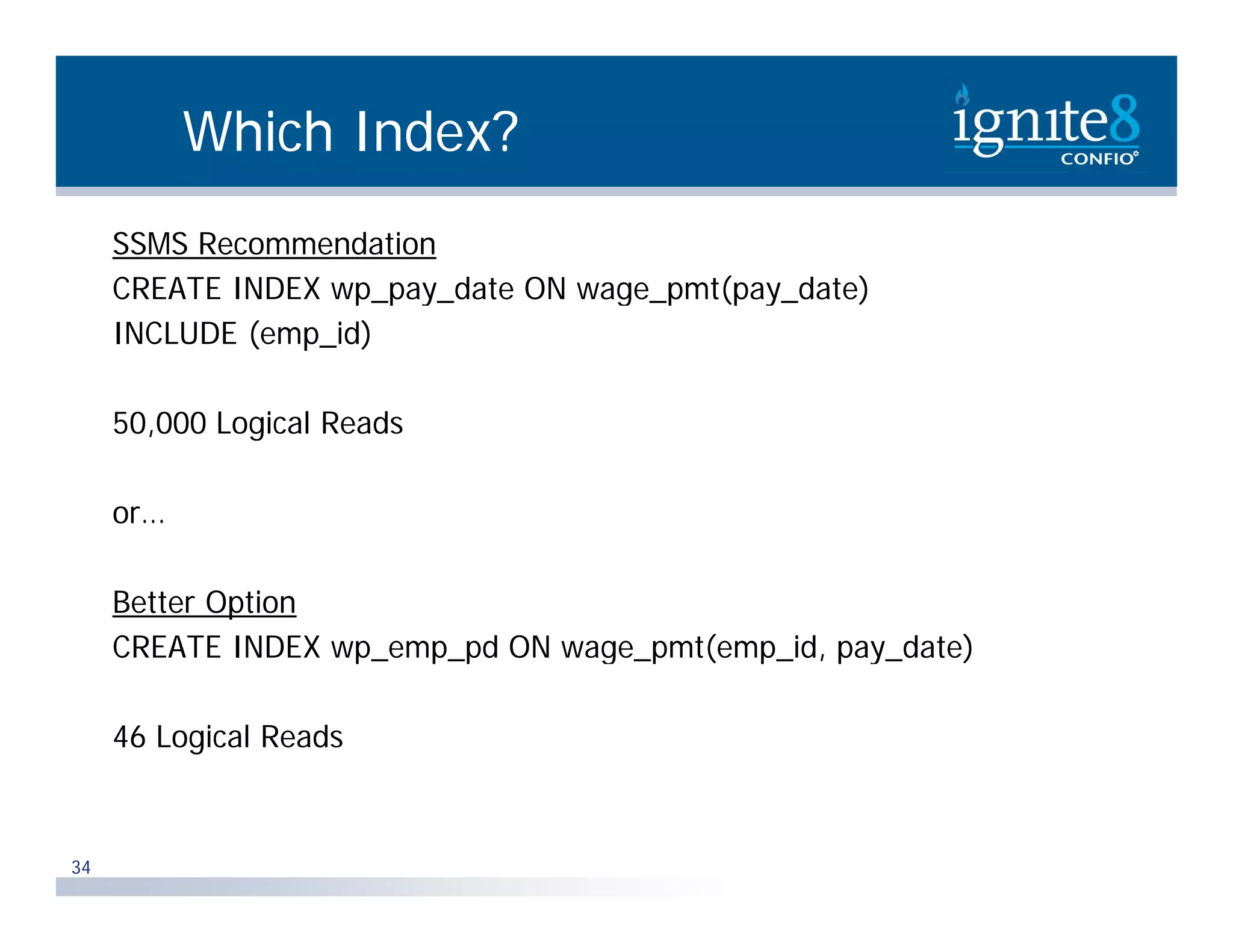
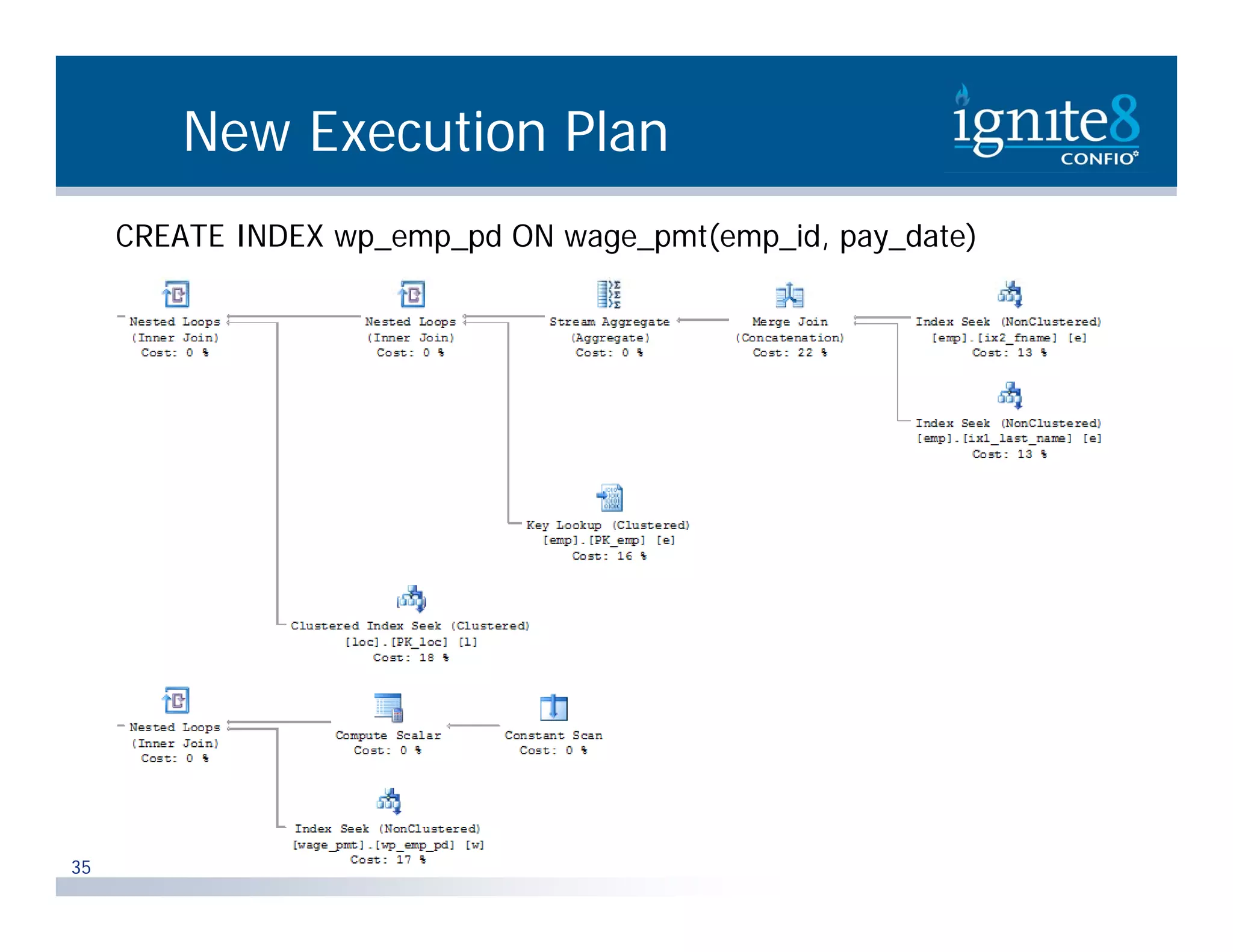
![SQL Statement 2 Lookup order status for caller SELECT o.OrderID, c.LastName, p.ProductID, p.Description, sd.ActualShipDate, sd.ShipStatus, sd.ExpectedShipDate FROM [Order] o INNER JOIN Item i ON i.OrderID = o.OrderID It i O d ID O d ID INNER JOIN Customer c ON c.CustomerID = o.CustomerID INNER JOIN ShipmentDetails sd ON sd.ShipmentID = i.ShipmentID LEFT OUTER JOIN Product p ON p.ProductID = i.ProductID LEFT OUTER JOIN Address a ON a.AddressID = sd.AddressID WHERE c.LastName LIKE ISNULL(@LastName,'') + '%' --AND c.FirstName LIKE ISNULL(@FirstName,'') + '%' AND o.OrderDate >= DATEADD(day, -30, CURRENT_TIMESTAMP) AND sd.ShipStatus <> 'C' Execution Stats – 10 159 Logical Reads 10,159 36](https://image.slidesharecdn.com/microsoftsqlserverquerytuning-101118141026-phpapp02/75/Microsoft-SQL-Server-Query-Tuning-36-2048.jpg)
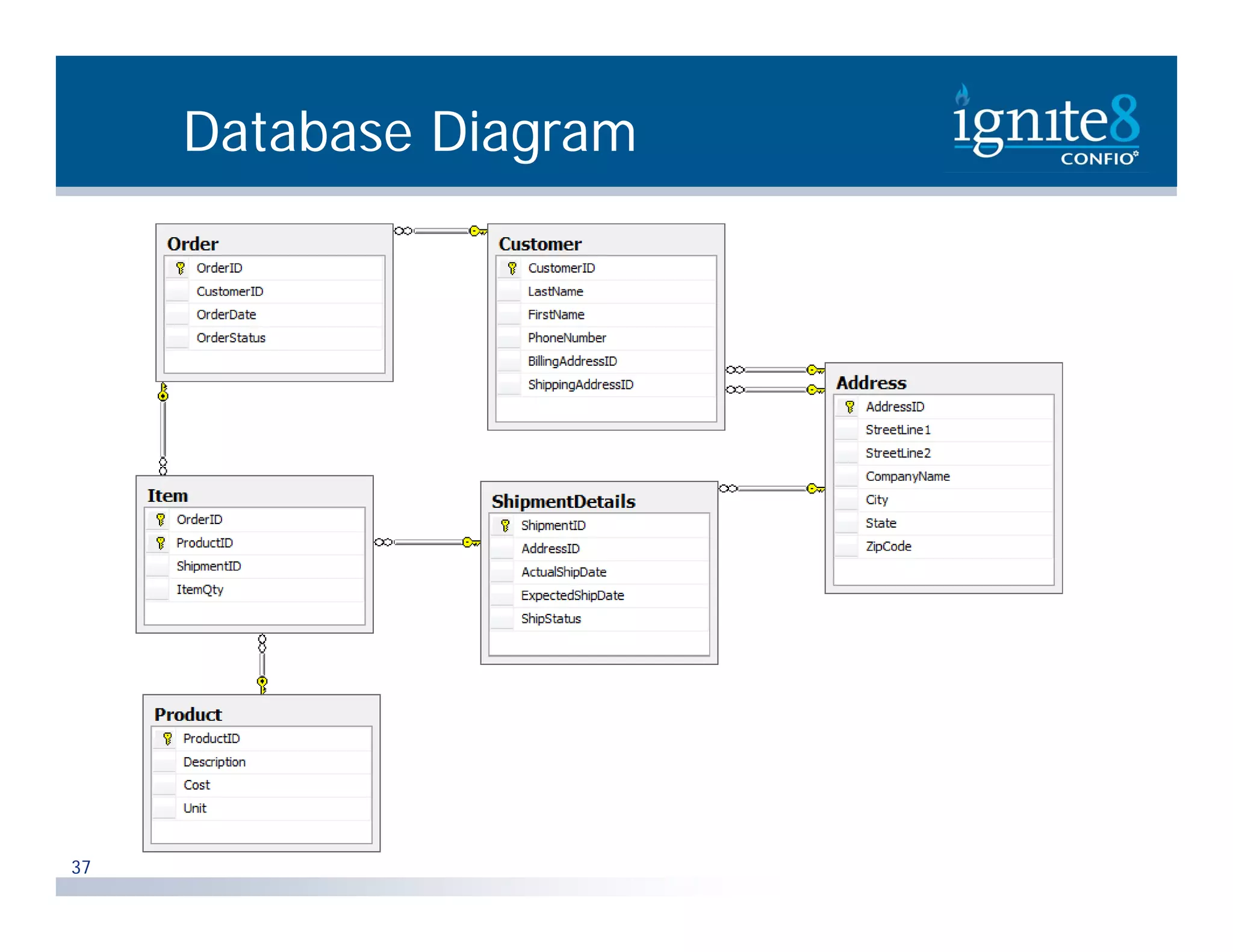
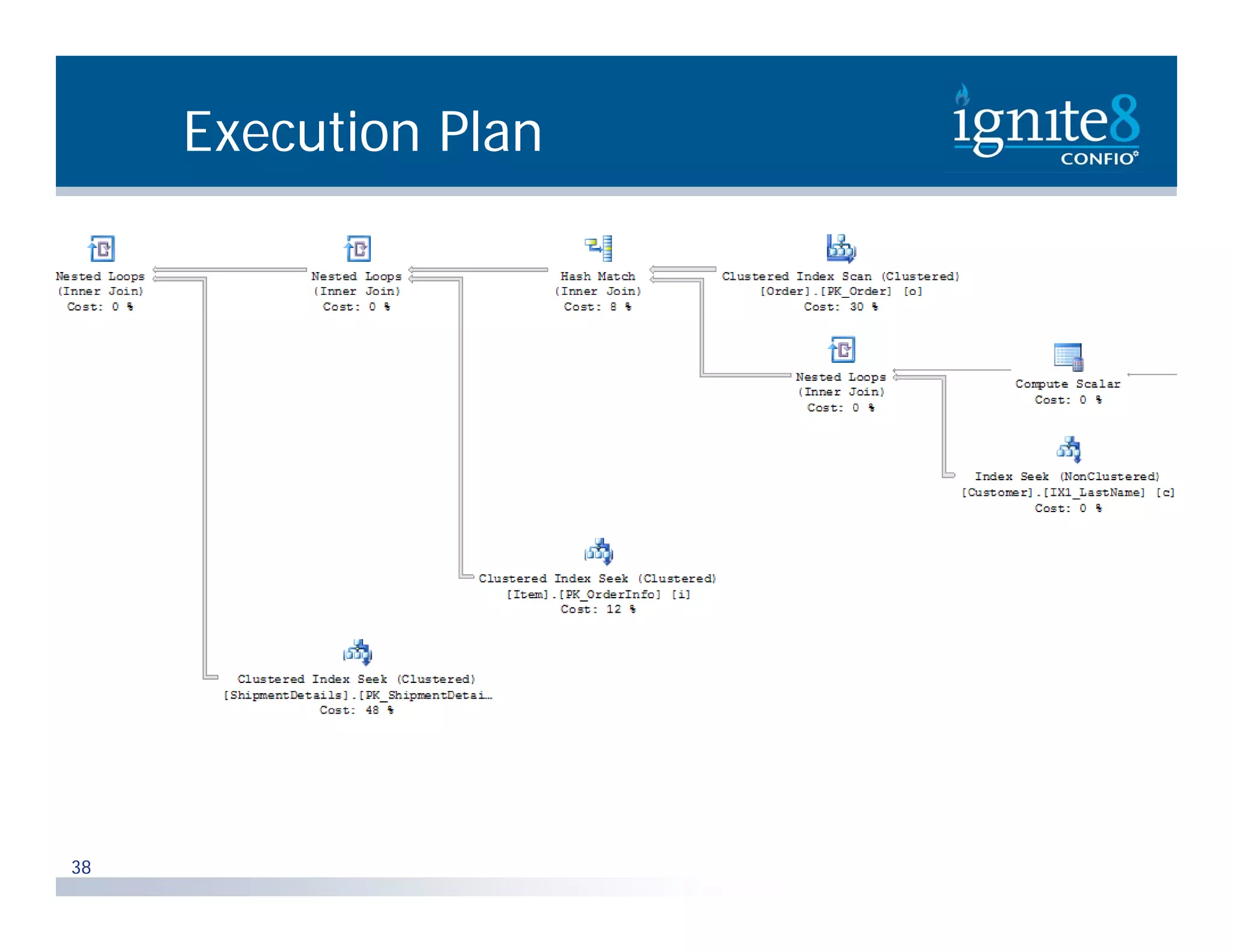
![SQL Diagramming o .08 .005 i c .03 sd p a SELECT COUNT(1)*1.0/(SELECT COUNT(1) FROM Customer) FROM Customer WHERE LastName LIKE 'SMI%' .03 SELECT COUNT(1)*1.0/(SELECT COUNT(1) FROM [Order]) FROM [Order] WHERE OrderDate >= DATEADD(day, -30, CURRENT_TIMESTAMP) .08 SELECT COUNT(1)*1.0/(SELECT COUNT(1) FROM [Order]) FROM [Order] WHERE OrderStatus <> 'C' .005 -- Combined .005 39](https://image.slidesharecdn.com/microsoftsqlserverquerytuning-101118141026-phpapp02/75/Microsoft-SQL-Server-Query-Tuning-39-2048.jpg)
![Data Skew Problems SELECT OrderStatus, COUNT(1) FROM [Order] GROUP BY OrderStatus Only 0.5% of rows are <> ‘C’ How about changing the query? g g q y • AND o.OrderStatus = 'I' Add an Index on ShipStatus 40](https://image.slidesharecdn.com/microsoftsqlserverquerytuning-101118141026-phpapp02/75/Microsoft-SQL-Server-Query-Tuning-40-2048.jpg)
![New Execution Plan CREATE INDEX IX2_OrderStatus ON [Order] (OrderStatus) INCLUDE (OrderID,CustomerID) ( , ) Execution Stats – 3,052 Logical Reads 41](https://image.slidesharecdn.com/microsoftsqlserverquerytuning-101118141026-phpapp02/75/Microsoft-SQL-Server-Query-Tuning-41-2048.jpg)
